Berlin 2024 Programme
Temporary exhibition
Haus der Kulturen der Welt
John-Foster-Dulles Allee 10, 10557 Berlin / Subway: lines S5, S7, S9, S75, station: Hauptbahnhof
Free admission
Each day, specific thematic ensembles are deployed in the space, looped on flatscreen monitors in the Audifoyer and projected in the Auditorium. An evolving and temporary exhibition where thematics unfold, alternate and question contemporary practices of the moving image.
From 2pm to 8pm | Audifoyer
"Against"
Bian Yunxiang : A Trio Of Tales - Video | 4k | black and white | 16:0 | China | 2023
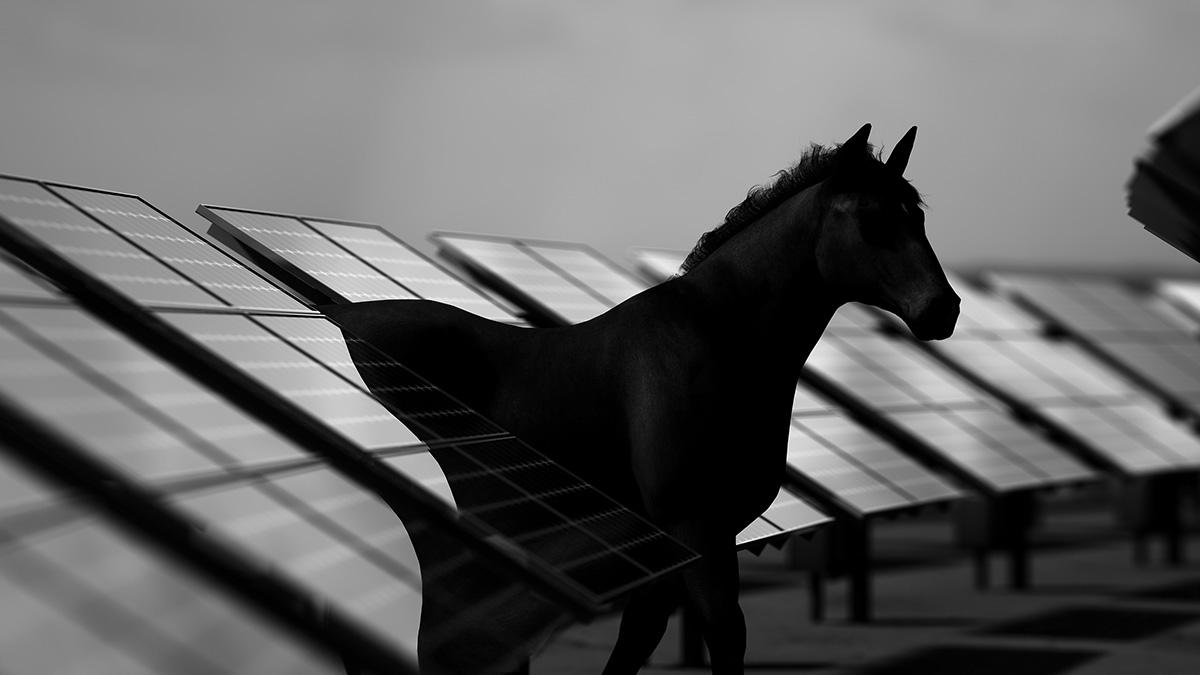
Bian Yunxiang
A Trio of Tales
Video | 4k | black and white | 16:0 | China | 2023
The collision and fusion between civilizations, the transformation of the geological landscape, the conflicts between human beings and natural forces – after thousands of years, they have been molded into specimens of human ambition in different times and displayed on the timeless wilderness. However, the heavy significance of their conflicts in their own time has been dissolved by the endless wilderness and become a simple landscape beaming their messages to the timeless vast. When the shadow of modern the signal tower passes over the beacon tower built two thousand years ago, the significance of conflicts in different times collapses at the same time. Indigenous ecological knowledge and modern civilization representing advanced productive forces coexist in the gaps of collapse. The sublime will to strive for arete blocked by giant building fortifications echoes over the desert as permanently and incoherently as the signal sent by the towers. The passion and ambition for conflict have not diminished but have become more and more intense. The exploration of the deep sea and space, obsession and fear of artificial intelligence, everyone’s determination to fight against everyone, trade war, economic war, energy war, technology war, information war, cold war thinking, clash of civilization, identity politic. Human society seems to be in an eternal state of conflict, a stasis. This series of images are three longitudinal slices of this stasis.
Bian Yunxiang, creative designer/media artist who does visuals in digital space, self-taught in visual communication, trained in postdigital storytelling, specialising in the vast in-between, working as a design technologist in luxury, practicing media art and critical design around the topic of digital geopolitics, lecturing at the Royal College of Art and China Academy of Art, exhibited works in London, Eindhoven, Athens, Dublin, Shanghai, Hangzhou, Bejing, Kaohsiung, completed commercial art commissions from Burberry, Harrods, Nike, BMW, and Arcteryx through the years. Currently based in Shanghai, previously in Hong Kong and London. In my practice, I use media technology to express concern about geopolitical-related topics and create poetic moving images in the context of post-colonialism and global civil war through the construction of digital geo-landscapes. This allows me to document and depict the diverse and complex ways in which people engage with extreme environments from a political philosophy perspective.
Bertrand Lamarche : L Homme Aux Etangs - Video | 0 | color | 15:0 | France | 2023
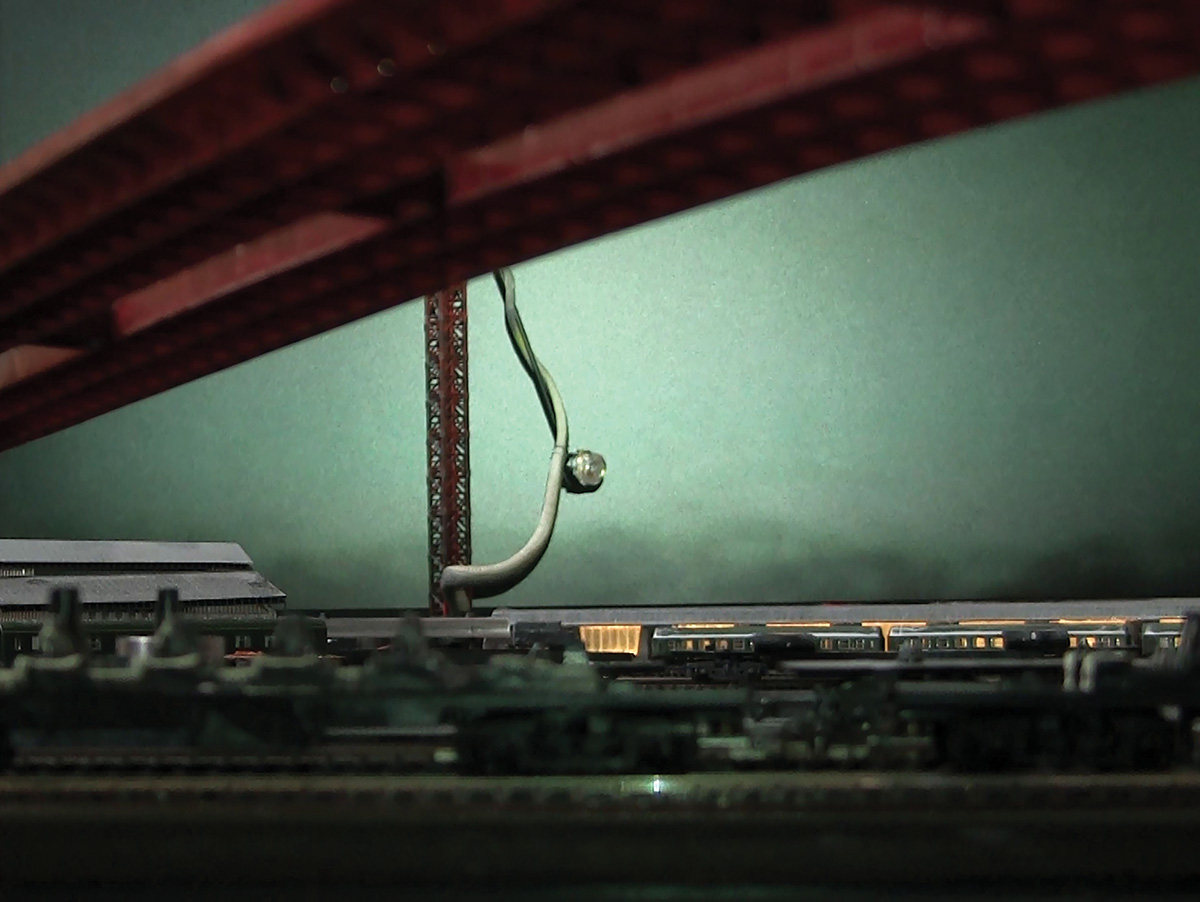
Bertrand Lamarche
L Homme aux Etangs
Video | 0 | color | 15:0 | France | 2023
Le film consiste en un nombre de plans fixes basés sur une légende qui décrit un combat entre un géant et un serpent de vase ainsi que l’impact de leur combats sur la météorologie et le climat. Le film met en scène une maquette de ville et des plans qui montrent un paysage où développement urbain, industrie et météorologie sont le cadre qui accompagnent le récit. Le travail met l’accent sur les liens entre maquette et cinéma par la projection d’images sur le paysage à échelle réduite. Un des buts du film est de faire se croiser les genres cinématographiques du réalisme, du fantastique et du film noir par une succession de plans relatifs les uns aux autres et qui cependant peuvent revendiquer leur autonomie comme tableau. Le film pause comme principe l'idée de la cité comme enjeu et comme endroit du politique, là où on organise, où l’on négocie, ou pas. L'idée d'un conflit évité, imminent ou qui advient est aussi présent ici, à travers le décor qui accueille le récit de géants, héritiers des Kaÿju.
Bertrand Lamarche En ayant recours à des distorsions d'échelles spatiales ou temporelles, Bertrand Lamarche construit un ensemble d'hypothèses sculpturales à la fois extatiques et conceptuelles. Son travail s'appuie sur l'amplification et sur le potentiel spéculatif de figures qu'il convoque régulièrement dans ses travaux depuis près de 20 ans : les paysages urbains et industriels, la météorologie, les ombellifères géantes, les vortex ou les platines-vinyles. Une grande part de son travail se caractérise par un désir de subjectivation et d'appropriation de ces différentes portions ou figures du réel. Par un travail de modélisation, l'artiste réinvestit ces figures, et développe un ensemble de propositions, parfois vertigineuses dans le sens où elles procèdent de boucles, qu'elles mettent en scènes des abîmes et procèdent d'une perte de repères spatio-temporels et de distorsions d'échelles. Né en 1966, Bertrand Lamarche vit et travaille à Paris. Il est représenté par la galerie Jérôme Poggi. Il est diplômé de La villa Arson, à Nice. Son travail a été montré dans divers musées et centres d’arts en France, aux USA, au Brésil et en Europe, depuis 1997. Il fait partie de collections privées ainsi que de collections publiques telles que le musée national d’Art moderne - Centre Pompidou (Paris), le FRAC Île-de-France, Les Abattoirs (Toulouse), le MAC VAL (Vitry-sur-Seine) ou le Musée départemental d’art contemporain (Rochechouart). En 2012, Bertrand Lamarche a été nominé pour le prix Marcel Duchamp. Son oeuvre faisait l’objet de deux importantes expositions, au FRAC Centre (Orléans) and au CCC (Tours). Une monographie, the plot, a été publiée récemment en 2018 avec La Maréchalerie-centre d’art contemporain ENSA V, et inclue des textes de Nathalie Leleu et de Ingrid Luquet-Gad.
Eléonore De Montesquiou : Swordfish - Experimental doc. | 0 | color | 6:0 | Estonia, Russia | 2022
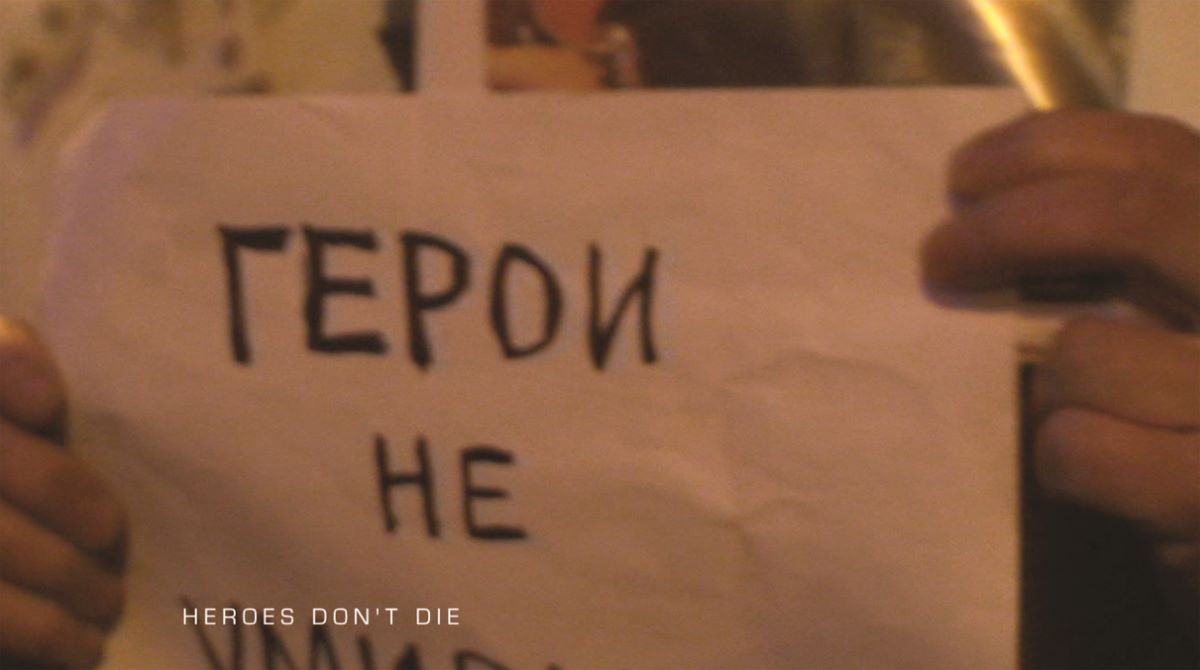
Eléonore De Montesquiou
Swordfish
Experimental doc. | 0 | color | 6:0 | Estonia, Russia | 2022
February 2015, Vladimir Putin’s opponent, Boris Nemtsov, was assassinated not far from the Kremlin in Moscow. Images of pain and protest, texts by Pablo Neruda are an open call for reflection in the short film ‚Swordfish’. Today, sadly, these images take on an even more painful resonance. Against hatred, against war, let's keep yelling!
Eléonore de Montesquiou was born in Paris, she lives in Berlin and Tallinn. Her work revolves around the articulation between private and official histories, personal and national identities. It tackles the intricacies and ambiguities of living in the margins, based on her personal experience of up rootedness. Eléonore is primarily working with video, she tapes testimonies, creating prosthetic memories of repressed histories. In her documentary-informed works, her camera becomes the voice of these voiceless people. Her work is based on a documentary approach, translated in films, drawings and texts. In Estonia she is giving voice to the Russian community or asylum seekers from French speaking countries arriving in Estonia. The films follow the protagonists over time. „Traverses“, with shepherds in La Grave, in the Hautes Alpes, since 2011, or „Nagrane“ with women living on the Estonian-Russian border, since 2005.
Sergei Prokofiev : Fireworks On The Swamp - Video | 0 | color | 6:40 | Russia | 2020
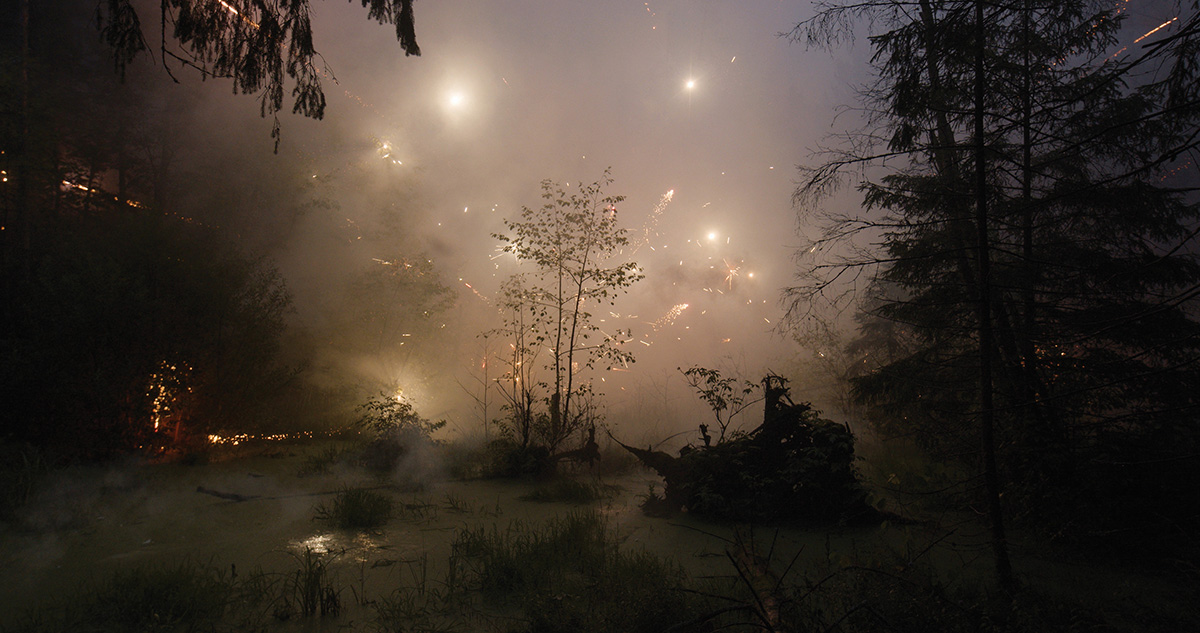
Sergei Prokofiev
Fireworks on the Swamp
Video | 0 | color | 6:40 | Russia | 2020
- Why do you want to blow fireworks on a swamp? - Well, I want it to happen in reality. There was fireworks on the swamp, that's for sure. The intensity of what is happening is so high that the consciousness does not have time to deconstruct the image of this event. Once the smoke dissipates, we can talk about interpretation field. But this is not so important, because it consists only of versions of reality and their totality does not give us a complete picture. It is important to live directly in the experience, where absolute reality can be revealed.
Born in 1983 in Moscow, Russia. Lives and works in Paris, France. In 2011 he graduated from the School of Contemporary Art "Free Workshops'' at MMOMA, Moscow. From 2011 to 2016, he co-founded and participated in the non-profit contemporary art site «It is not here», Moscow. In 2013 he won a competition to create a light installation "New Media Night" in Nikola-Lenivec, Russia. In 2013 he graduated from the Institute of Contemporary Art (ICA), Moscow. In 2014 he became a finalist in the international competition "Center - Periphery", Italy. From 2016 to 2020, he was a member of the Elektrozavod gallery team, Moscow. In 2021, he received the Second prize of “Zverev Art Prize”, Moscow. In 2022 he received the Charlottenborg Spring Exhibition Solo Award, Denmark. In mid-2022 he became an artist in exile because of his stance against Russia's full-scale military invasion of Ukraine. He is a participant and curator of exhibitions in Russia, Italy, Austria, Sweden, Hungary, Poland, Norway and Denmark. His current work includes graphics, sculpture, installations, performance and video. The works are in private collections and collections of the Luciano Benetton Foundation (Italy), the Sphere Foundation (Russia), the State Tretyakov Gallery (Russia) and Uppsala Art Museum (Sweden).
Maria Kapajeva : The Enforced Memory - Video | 0 | color | 13:0 | Estonia | 2023
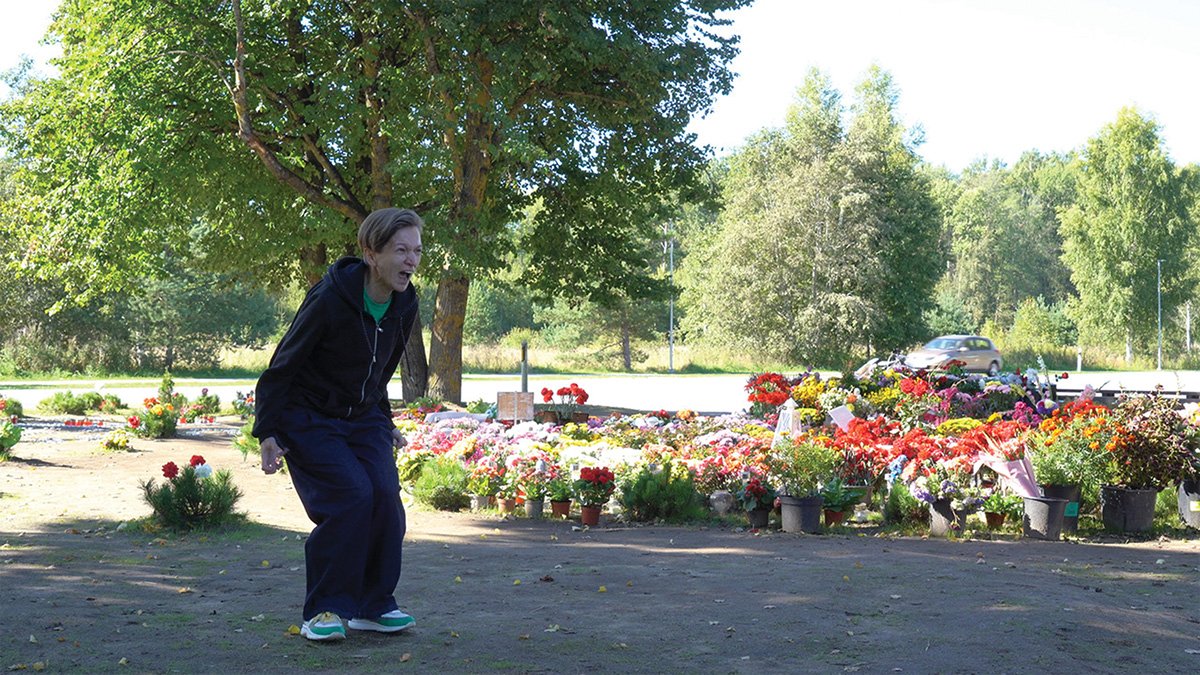
Maria Kapajeva
The Enforced Memory
Video | 0 | color | 13:0 | Estonia | 2023
The video is an artist’s momentary personal reaction on the events of August 2022, which took place in Estonia, in Narva, Maria’s home town. Since the war in Ukraine escalated, the removal of Soviet monuments in Estonia became intensively debated topic followed by the government’s decision to demolish any Soviet attributes and monuments from the public spaces. The tank monument in Narva became a stumbling block between the views of different communities within the country. It has especially became symbolic and problematic because it stood right at the border with Russia, on a riverbank of Narva river, facing Estonia. In the final scene the artist stands on that riverbank facing Russia. As Kapajeva grew up on that border, she felt an urge to speak up about the situation with the monument. As the artist states, the video helped her not just to scream out everything what accumulated for the first half a year of the war, but, also, it helped her to regain meaningfulness in her own art practice that she lost since the full invasion of Ukraine by Russia.
Born in the Soviet Union, raised in an independent Estonia and educated in the UK, Maria Kapajeva has found herself in an involuntary position of ‘the other’ everywhere. A position, she has embraced and employs as datum in her artistic practice, leads her to explore a diverse spectrum of cultural identity and gender issues within historical and contemporary contexts. Being originally from a borderland region, border within postcolonial and post-Soviet geopolitical conditions becomes to be the core in her work. She uses various mediums, such as video, photography, textile and installations, to bring to the focus what is often left invisible or stays in peripheral vision. Kapajeva’s works exhibit internationally including some of the solo exhibitions at Estonian National Archive (2013), Estonian Museum of Art KUMU (2022), Finnish Museum of Photography (2021), Lithuanian Gallery of Photography (2020) and Tallinn Art Hall (2020). Her video works were screened at various venues and festivals including Art Viewer (2023, Spain), VAFT: Visual Art Festival (2020, Finland), Luminocity Video Art Festival (2018, Canada), Berlin Feminist Film Week (2017, Germany) and others. Her video work ‘Test Shooting’ received Runner-Up Award at FOKUS Video Art festival (2018, Denmark). Kapajeva is a member of Estonian Artists’ Association.
Kirill Savchenkov : The Past Ripens In The Future - Video | hdv | color | 5:1 | Russia, Italy | 2022

Kirill Savchenkov
The Past Ripens in the Future
Video | hdv | color | 5:1 | Russia, Italy | 2022
Andrei Rylov, Maxim Mezentsev : The End - Video | mp4 | black and white | 8:0 | Russia | 2022
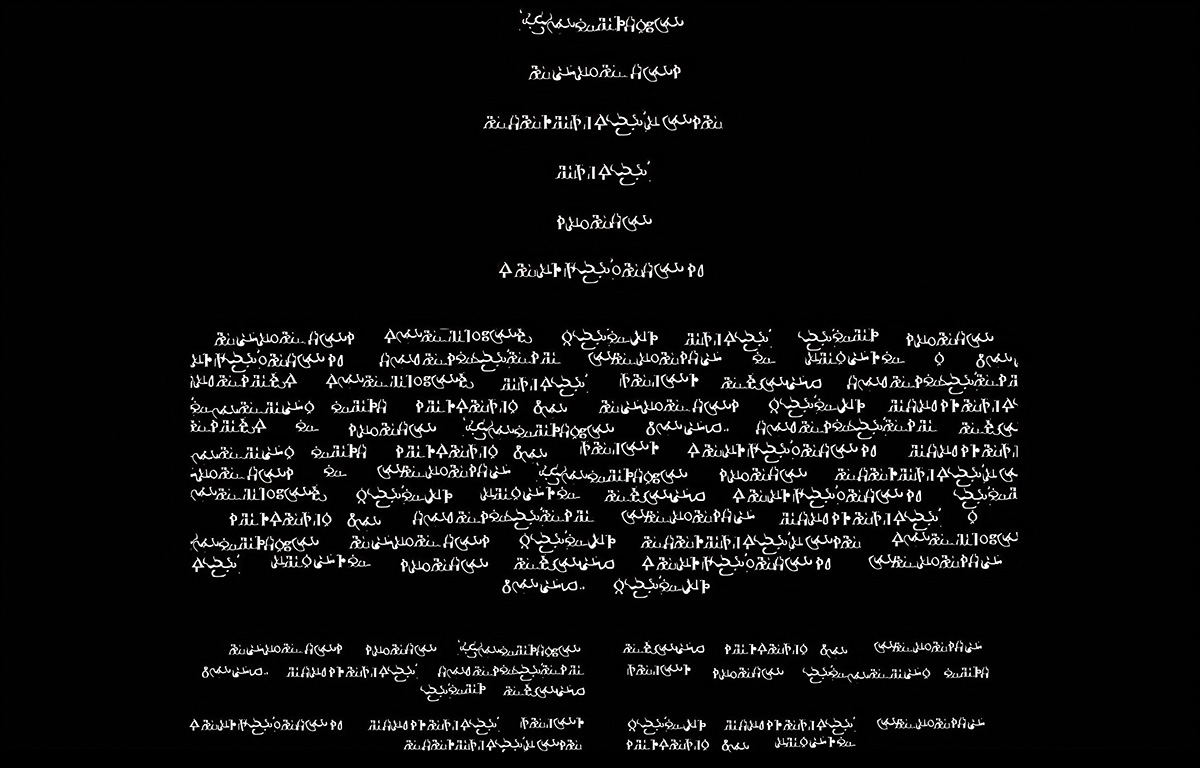
Andrei Rylov, Maxim Mezentsev
The End
Video | mp4 | black and white | 8:0 | Russia | 2022
The End is unreadable titles created by a neural network and endlessly running on a black screen. The project is part of a series of works in which the authors experiment with symbols generated by StyleGAN and other networks. The artists train neural networks on letters of different alphabets, and the language they create is immersed in the context of familiar forms: manifestos, posters, and now titles. These projects continue the tradition of experiments in text and visual media started by Russian Futurists who used abstruse language in poetry (Alexei Kruchenykh, Velimir Khlebnikov, etc.) and Moscow Conceptualists with their interest in poetic experiences (Lev Rubinstein, Dmitry Prigov, Andrei Monastyrsky, etc.). In The End it is impossible to read the text created by the neural network, but the appearance of symbols, their sequence and general layout allow us to perceive a set of meaningless signs as the closing credits of a movie. It is important that in movies we rather recognize titles by their appearance than by their content. The credits are the final part of any movie, but usually no one reads them. The irony is that in The End project there are only credits, here they are a work in their own right, impossible to read. Nor is it possible to wait for it to end.
Andrey Rylov is a new media artist who works in a field of sound sculptures and installations using materials from hardware stores and DIY electronics. He performs with experimental music, creates video works using neural networks, as well. Andrey Rylov is a graduate of the New Media Laboratory, participant of multiple collective exhibitions and festivals: NUR festival (Kazan, 2021), Prepared Surroundings festival (Moscow, 2020 and 2021), Blazar fair (Moscow, 2021), Morpho festival (St. Petersburg, 2021), Adaf.gr (Greece, 2019), Ars Electronica (Austria, 2019), Pixels festival (Yekaterinburg, 2019). Maxim Mezentsev is a graphic designer, visual artist and VJ from Izhevsk, Russia. He works with interfaces, fonts, animation and makes video for experimental theater. He constantly collaborates with the Center for Contemporary Dramaturgy and Directing in Izhevsk, Russia. Maxim Mezentsev participated at the Pixels festival (Yekaterinburg, 2019), Intervals festival (Nizhny Novgorod, 2019 and 2021), Night of Light festival (Gatchina, 2019), Adaf (Athens, 2020), METAXIS festival (St. Petersburg, Nizhny Novgorod, Yerevan, 2022).

Bian Yunxiang traces three wars, whose heavy significance seems dissolved by nature and the desert, scrutinizing what can exist in the interstices of collapse. Bertrand Lamarche takes up the legend of a fight between a giant and a snake, in a model city that becomes a political site. Conflict is either avoided or imminent, or it comes to pass. Eléonore de Montesquiou combines a text by Pablo Neruda with images of a protest march in Moscow in February 2015, following the assassination of Kremlin opponent Boris Nemtsov. Sergei Prokofiev sets off fireworks in a swamp, and the interpretation can only be opened once the smoke has cleared. In Estonia, on the banks of the Narva River, which marks the border with Russia, Maria Kapajeva stands in front of the monument to the tank erected in Soviet times. The removal of such monuments has become a subject of intense debate, and the government has decided to remove them all from the public space. Kirill Savchenkov evokes the history of oppression in Russia, which is also the history of the revolutionary movement. He refers to the sound communication, by beating, between political prisoners in prisons in the 19th century. Today, every version of the future creates a new version of the past, and the solitary confinement cell can be constructed by algorithms. Andrei Rylov and Maxim Mezentsev create a film's end credits, made up of unreadable, endless titles created by a neural network.
From 2pm to 8pm | Auditorium
"Off World"
Sherko Abbas : Silence Along The River - Experimental doc. | mp4 | color | 7:0 | Iraq | 2021
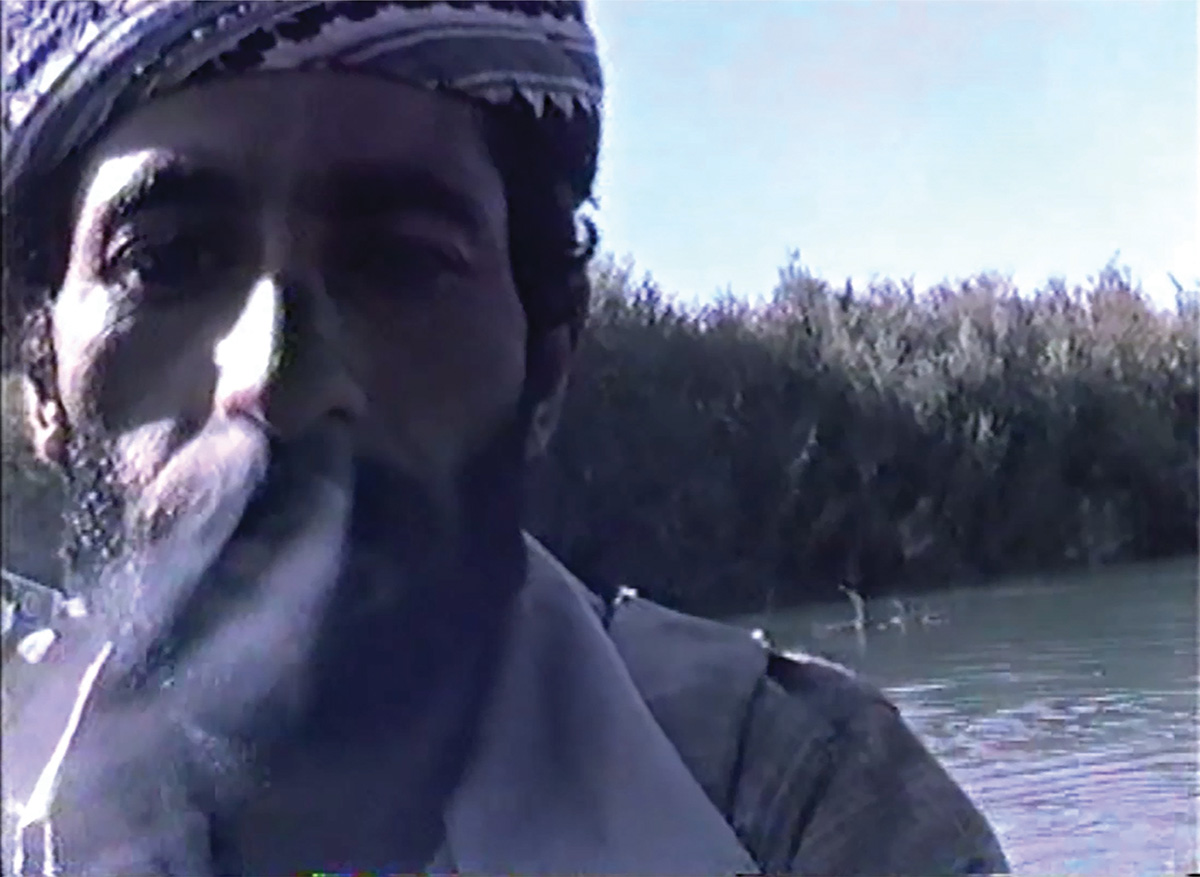
Sherko Abbas
Silence Along the River
Experimental doc. | mp4 | color | 7:0 | Iraq | 2021
In 1985 a group of Kurdish fighters, known as a "Peshmerga", on a mission to attack one of the army’s camps in the north of Iraq. They took the Sirwan river by a small raft to cross the area which was controlled by the Iraqi army. This footage is part of an old archive taken by my father Abbas Abdulrazaq, a former Kurdish fighter and cameraman. He accompanied this group of Peshmerga to document their activity during the mission. Despite all the risks they have taken, the battle didn’t happen. Consequently, my father filmed them when they were singing a song. I was very intrigued by his action, so I asked my father why this particular footage never showed before? He mockingly replayed who wishes to watch a film that has no fighting scenes?
Sherko Abbas is a Kurdish-Iraqi artist. He was born in Iran in 1978, where his family lived as refugees. They returned to Iraq when he was two years old. Abbas studied Fine Art in Sulaymaniyah, Iraq and earned a Master of Fine Arts degree from Goldsmiths College, University of London in 2015. His work explores sonic and visual memory, with a focus on modern memory that relies on recorded materials. Additionally, Abbas is interested in the current geopolitical situation in Iraq. Abbas’ works have been exhibited and screened internationally including at: Archaic, the Iraq pavilion at the 57th Venice biennale; Theater of Operations, MoMA PS1, New York; May Flames Pave the Way for You, Arsenal gallery, Bia?ystok; Push Festival, Manchester , UK; Towner International, Towner Eastbourne, Eastbourne; Speaking Across Mountains, Middle East Institute, Washington D.C.; Baghdad Mon Amour, Institut des Cultures d’Islam, Paris; Vernacularity, Alternativa Festival, Gdansk; Estrangement, The Showroom, London. Also, his moving image works were screened at the Independent Iraqi Film Festival's online screening, the 38th Kassel Documentary Film and Video Festival in Kassel, Germany, Aashra, Ashkal Alwan Online Film, Rencontres Internationales Paris/Berlin at the Louvre Auditorium in Paris, the Open City Documentary Combined Programme: What Rules The Invisible in London, Visit Festival Het Bos Ankerrui 5-7 in Antwerp, Belgium, Ruya Shop in Baghdad, and Shasha Movies online streaming. Abbas also works as a curator, organizer, and coordinator of cultural events. He was the operations manager for the "Post-war Culture in Iraq" project (2010) and curated the Clamour project (2016). In collaboration with curator Aneta Szy?ak, he researched and coordinated the "In-between Worlds: Kurdish Contemporary Artists" project. This resulted in a collection of artworks from over 30 Kurdish-Iraqi artists and a book. The collection is now part of the Imago Mundi collection under the auspices of the Fondazione Benetton Studi Ricerche in Treviso, Italy.
Natacha Nisic : Et N'être Que Brume - Experimental film | 0 | color | 15:0 | France | 2023
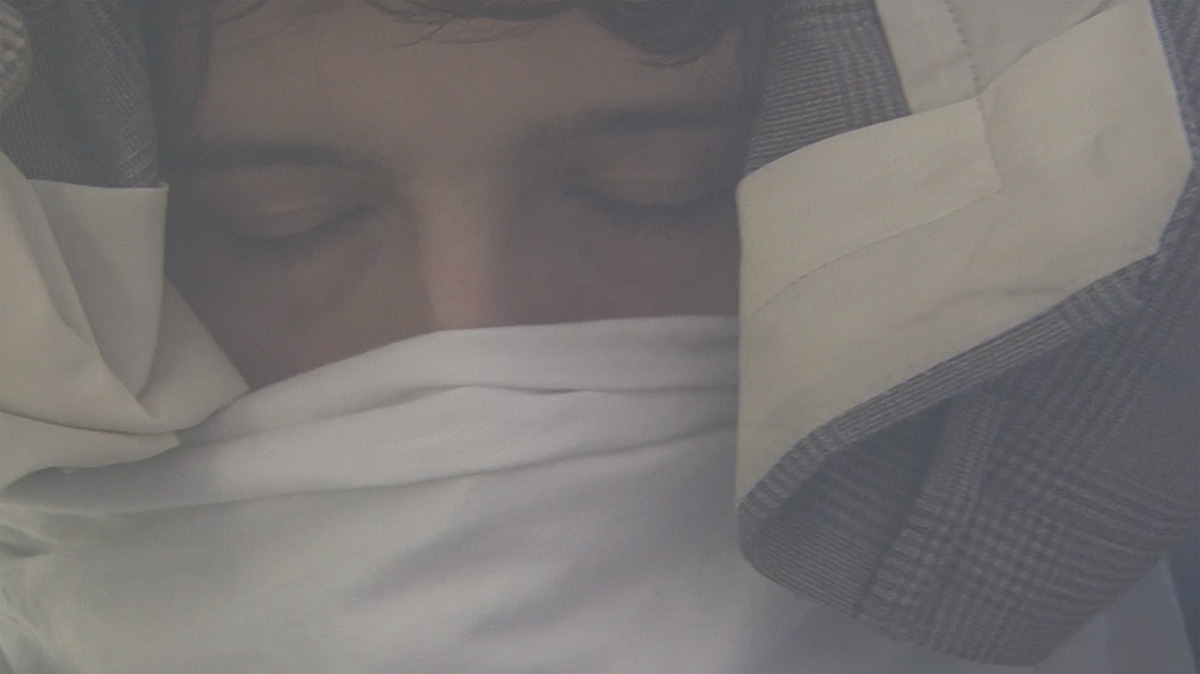
Natacha Nisic
Et n'être que brume
Experimental film | 0 | color | 15:0 | France | 2023
Dans la tour de la ville de Malakoff "Et n’être que brume » met en place le cadre expérimental d’une improvisation.Plongés dans les brumes, les êtres se révèlent. L’écran de la fumée permet une libération des affects car au sein du brouillard se logent les souvenirs, les torpeurs et les désirs. Le film est en hommage à la Crimée annexée depuis 2014 par la Russie.
Gleb Sereda : Kros - Experimental film | 0 | color | 52:0 | Russia | 2023
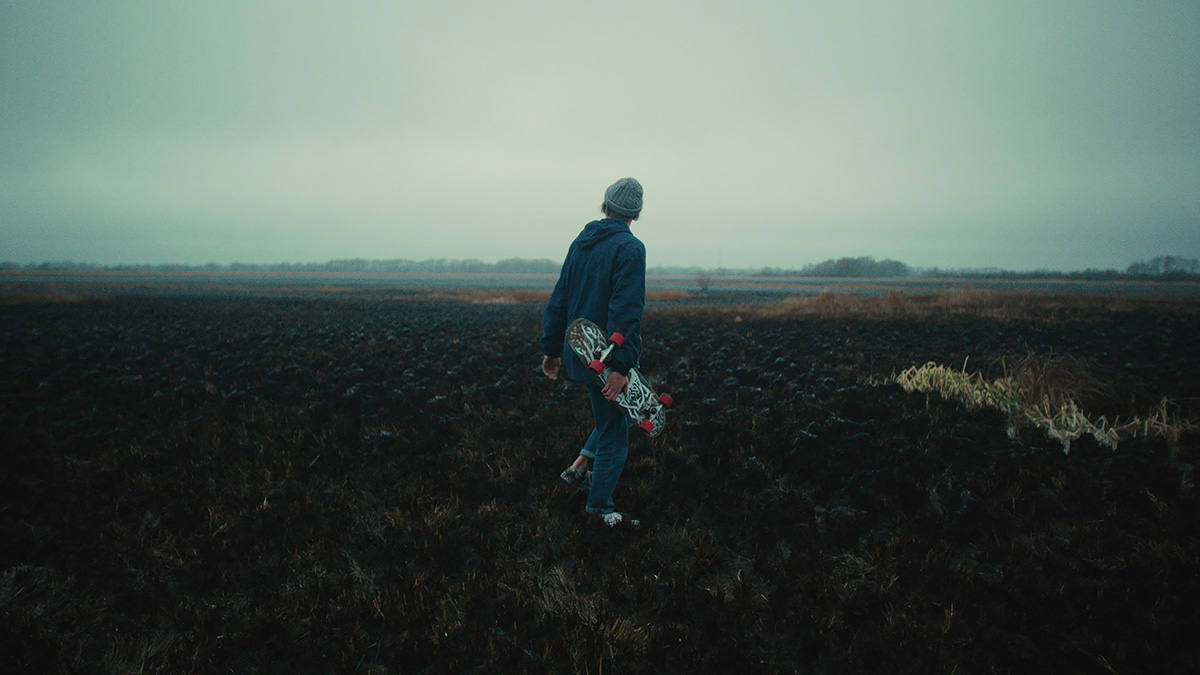
Gleb Sereda
Kros
Experimental film | 0 | color | 52:0 | Russia | 2023
This is a metaphorical story about two young skaters who are trying to make sense of themselves in the world.
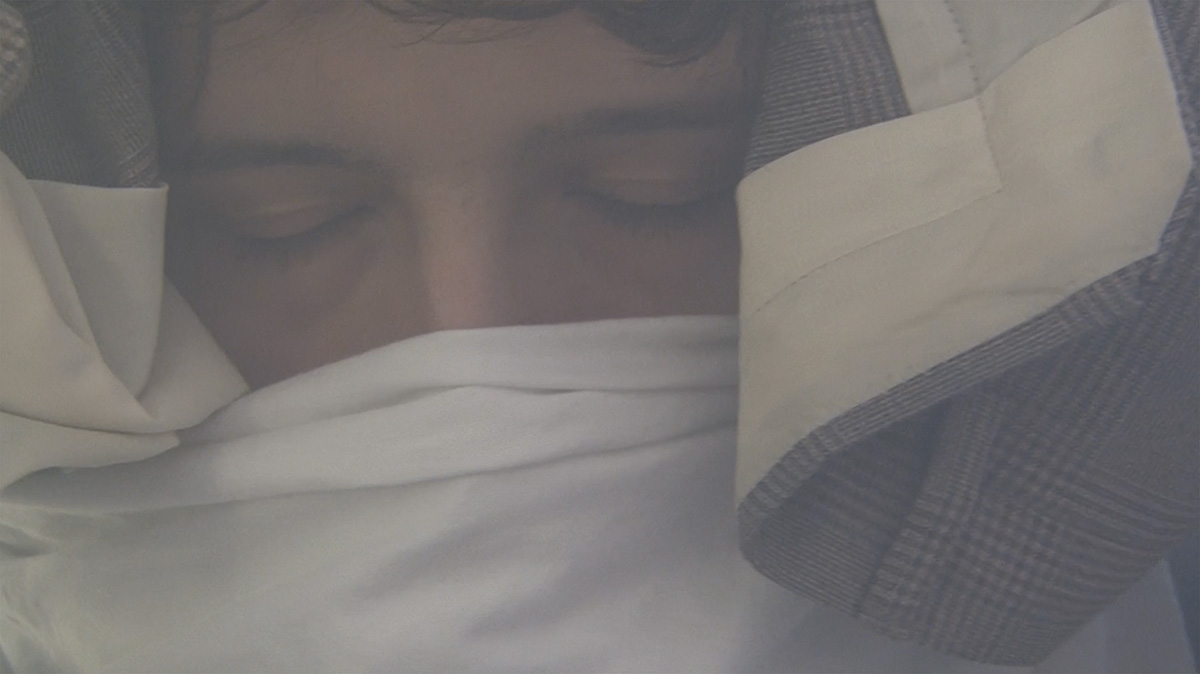
Sherko Abbas uses his father's archives, who in 1985 followed Kurdish fighters on a mission to attack a military camp in northern Iraq, but the battle never took place. Natacha Nisic proposes the experimental setting of an improvisation in an enclosed space immersed in the mist. Bodies and words are set free, like a reminiscence of confinement and war. Gleb Sereda follows two young boys as they seek their place in the world, seemingly living the Russian adage: "To go there, without knowing where - to find something, without knowing it".
VR experiences
Haus der Kulturen der Welt | Audifoyer
John-Foster-Dulles Allee 10, 10557 Berlin / Subway: lines S5, S7, S9, S75, station: Hauptbahnhof
Free admission
"Disrealities, collages and utopia"
The Rencontres Internationales Paris/Berlin invites you to experience 11 works in virtual reality. Gathered under the title "Disrealities, collages and utopia", the chosen works question our principles of reality, our daytime perceptions and our everyday representations.
Alexander Walmsley : Tirana Time Capsules - Experimental VR | 4k | color | 0:0 | United Kingdom, Albania | 2021
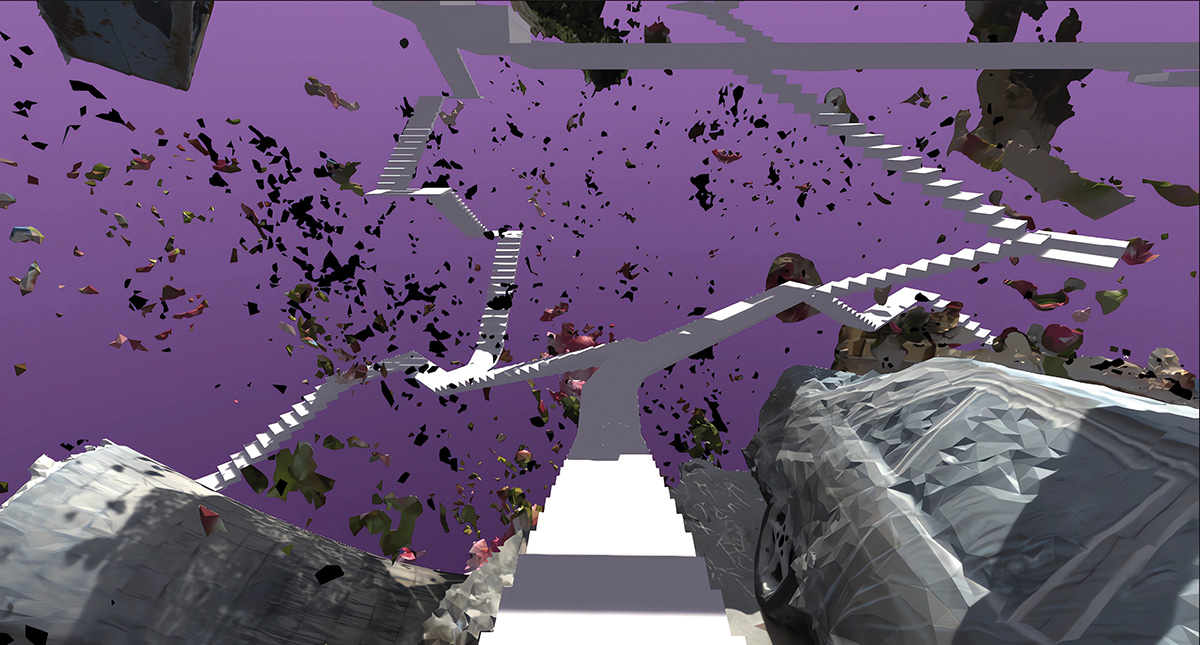
Alexander Walmsley
Tirana Time Capsules
Experimental VR | 4k | color | 0:0 | United Kingdom, Albania | 2021
The Tirana Time Capsules are a series of three virtual environments, accessible via web browser, that act as time capsules for three different neighbourhoods of Tirana in 2021. The chosen areas - 21 Dhjetori, Kombinat, and the Teatri i Gjelbërimit, an area of the Tirana Great Park - each embody different aspects of Tirana’s urban development over the past 100 years. Particularly since the early 2000s, this has been characterised by the gradual disappearance of public space as the building sector has increasingly become controlled by private interests. Drawing on the metaphor of the time capsule and employing so-called high-fidelity recording techniques such as photogrammetry and field recording, the work re-appropriates and re-constitutes these different areas of the city as virtual environments as a way of exploring the intersection of personal memory and community heritage. In addition, the work seeks to question the promises made by such recording technologies that claim to render and preserve reality as a high-fidelity digital copy: in short, what exactly is being preserved when we use these techniques of digital preservation?
Alexander Walmsley (b. 1992) is a media artist with a particular interest in the landscapes of the real and the virtual. In his practice, he investigates how our understanding of these landscapes is shifting, mediated by the new technological, environmental and social realities of the 21st century. His work is situated primarily between 3D, photography, animation, and XR. His recent work has been shown at the Daejeon Biennale of Arts and Sciences, Tirana Art Lab, Sharjah Art Foundation, The Photographers' Gallery, and VRHam! Festival. He was a commissioned artist for the Albanian pavilion of the 59th Venice Biennale and has taken part in residencies at the Tirana Art Lab, Albania, and Moskosel Creative Lab, Sweden, among others. Previously, he studied Anthropology and Archaeology at the Universities of Cambridge (UK) and Geneva (CH).
Ana Elena Tejera : Mosquito: Historia De Una Herida - VR 360 video | mp4 | color | 6:45 | Panama | 2022
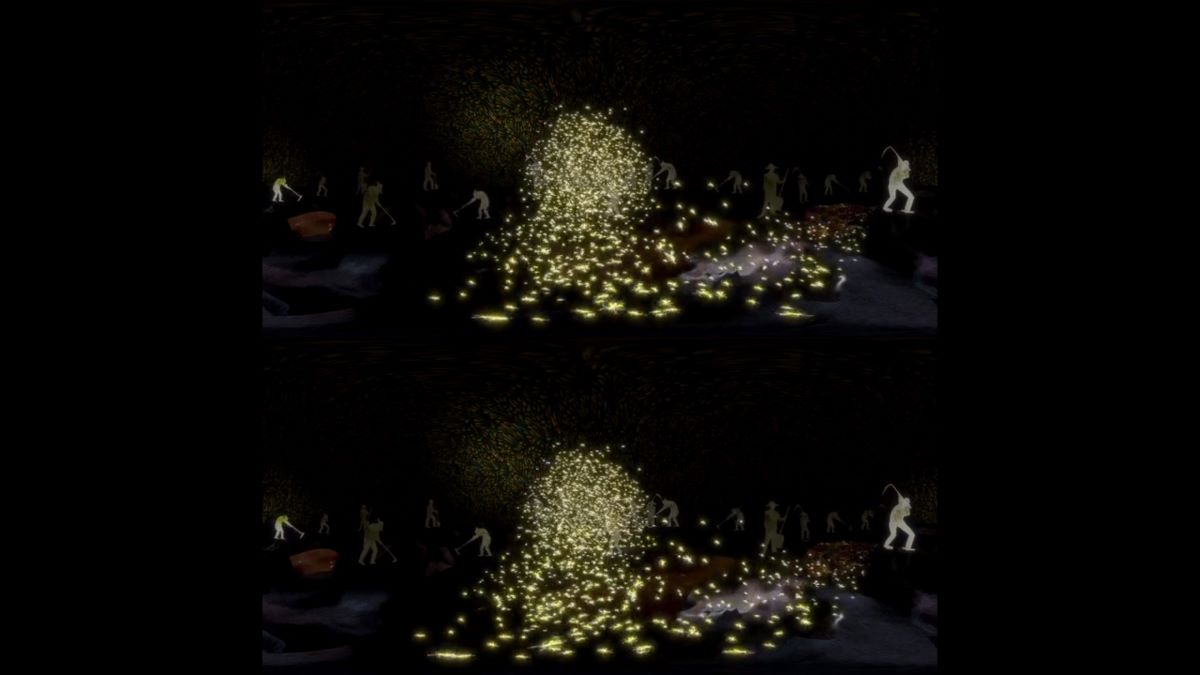
Ana Elena Tejera
MOSQUITO: Historia de Una Herida
VR 360 video | mp4 | color | 6:45 | Panama | 2022
A red jaguar, roams the early morning in the jungle of Panama until his footsteps are disturbed by a metallic sound that opens a gap in the earth. He enters the wound, where machines build a Canal and the metallic music gives life to the yellow mosquitoes. The workers blue tearful voices murmur resilience, longing for a rebirth of the jaguar on the scar.
Panamanian multidisciplinary artist in the fields of film and performance. She was artist in residence at Le Fresnoy. She was chosen as Berlinale Talent 2023. She worked on the restoration of part of the Panamanian film archive at the Filmoteca de Catalunya and on the creation of the "Festival de la Memoria", a series of performative installations in urban spaces with political archive images and sound performance. Panquiaco, his first documentary film, premiered at the International Film Festival Rotterdam. His latest short film, A Love Song in Spanish, participated in the official competition at the Berlinale and at the MoMA. Her first virtual reality film Mosquito: A Wound Story premiered at the International Film Festival Rotterdam. She is preparing his next solo exhibition and performance with Solar Gallery and Batalha Centro de Cinema de Portugal (2023).
Loukia Alavanou : On The Way To Colonus - VR 360 video | mov | color | 20:0 | Greece | 2021
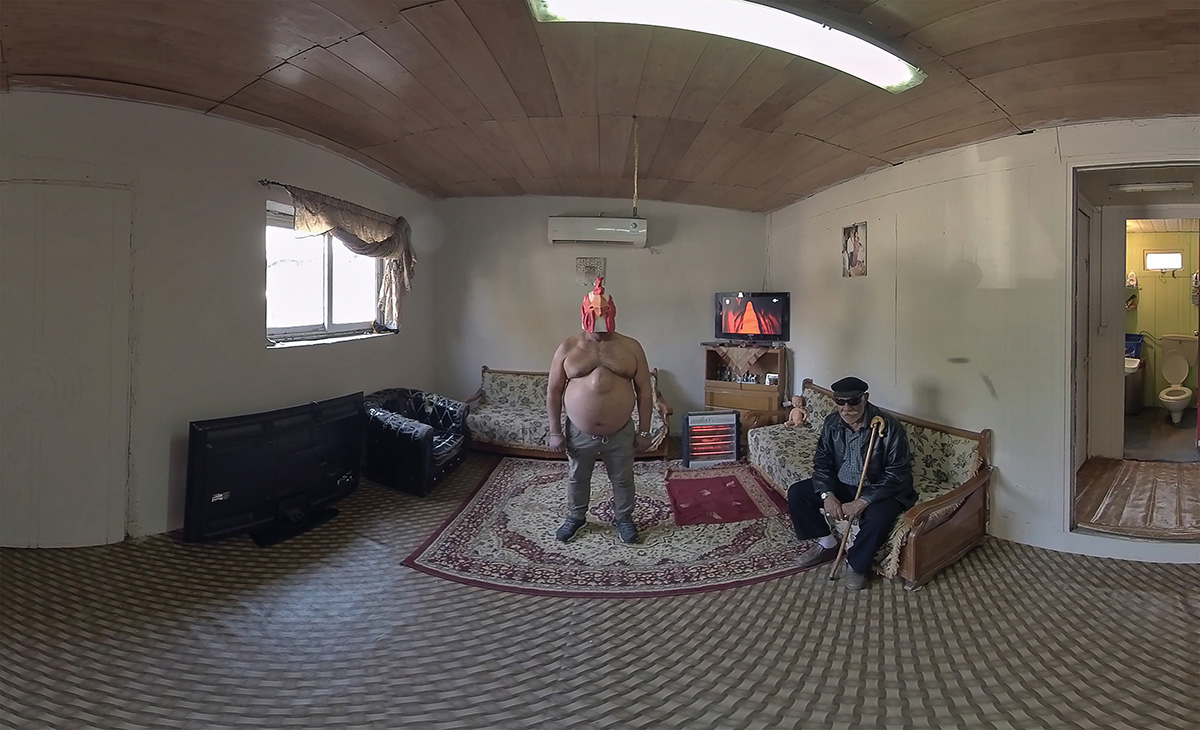
Loukia Alavanou
On the Way to Colonus
VR 360 video | mov | color | 20:0 | Greece | 2021
Blind Oedipus, in older age, left Thebes as an exile accompanied by Antigone, who was both his daughter and sister. They sought refuge in Colonus of Athens. What if the tragic hero of Sophocles’ play 'Oedipus at Colonus' was a Romani nomad residing in today’s post-industrial outskirts of western Athens? OTWTC is a ‘docufictional’ VR film cast with Romani amateurs who live at the ghettoised toxic wastelands of Thriasian Plain, where Sophocles’ wandering hero is meant to have passed from. Consisted of a spatial sound design (ambisonics), the film's audio incorporates location sounds recorded inside the dwellings that merge “high” and “low” culture, often carrying with them the “eerie echoes” of dubbed TV series, speaking themselves about “Oedipal conflicts”, ‘absent fathers’, ‘incest’, murder and death.
Loukia Alavanou is a moving image artist and filmmaker. She is representing Greece at the 59th Venice Art Biennale with the exhibition “Oedipus in Search of Colonus. Alavanou holds an MA in Photography from the RCA in London. She was the winner of the 5th Deste Prize. In recent years, after receiving international acclaim, she started to be involved with the production of VR films and founded the first VR production company in Greece. She held a retrospective exhibition at State of Concept, Athens in 2018. For the years 2021 and 2022 Alavanou is a fellow artist at ONX Studio, organised by Onassis USA and the New Museum in NY. Alavanou’s work has been presented by institutions and festivals including KANAL Centre Pompidou, Accelerator, Stockholm, Gucci Garden, Kino Der Kunst, Palais de BOZAR, Palais de Tokyo, Athens Biennale, Moscow Biennale, Fiorucci Art Trust, The Museum of Cycladic Art, Benaki Museum. Her films are part of numerous collections including the Onassis Collection, the Dakis Joannou Collection, The Center for Art and Media Karlsruhe/ ZKM, PCAI/ Polyeco Contemporary Art Initiative.
Nicolas Gebbe : Lockdown Dreamscape Vr - VR 360 video | 0 | color | 7:0 | Germany | 2021
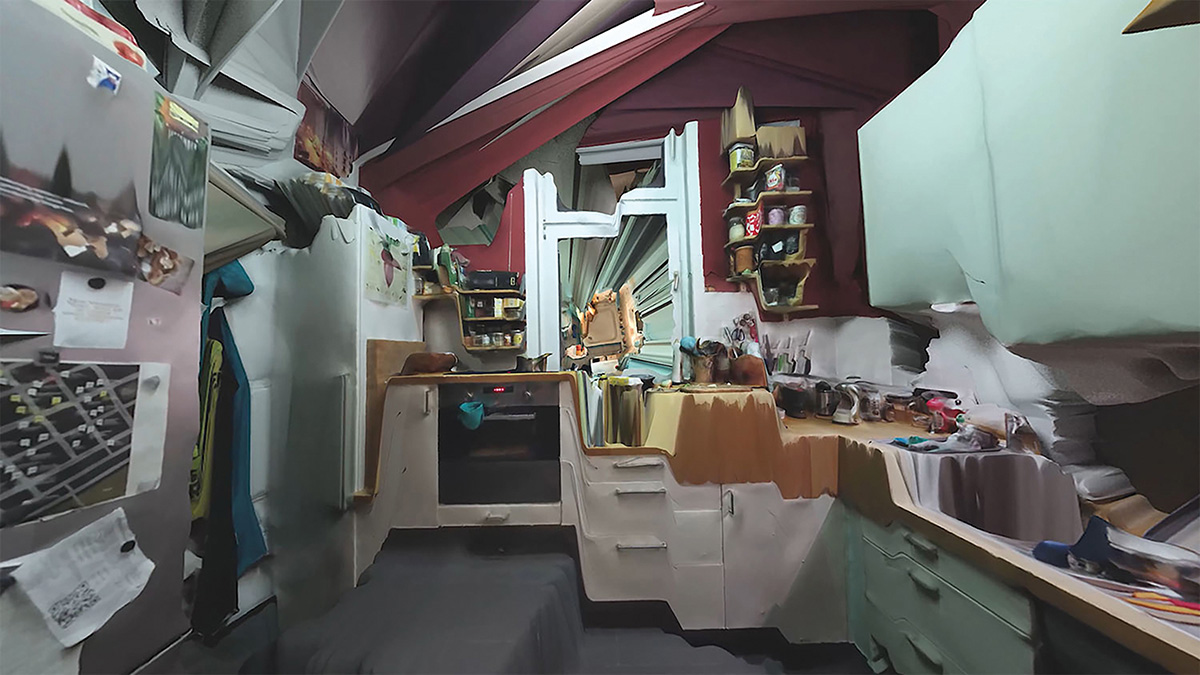
Nicolas Gebbe
Lockdown Dreamscape VR
VR 360 video | 0 | color | 7:0 | Germany | 2021
When spending a lot of time at home in isolation, the walls begin to move. The sense of time fades, the days pass quietly, everything seems to repeat itself endlessly. Spaces, conversations, visual impressions and sounds merge and make everything seem like a long dream.
Nicolas Gebbe was born in London in 1986. He currently lives and works in Frankfurt am Main / Germany as a 3D artist, filmmaker and sound designer. 2018 he receives his art diploma at Hochschule für Gestaltung Offenbach with a film major. He focuses on experimental 3D animation and hybrid film formats. Since graduation, his animated short films have been screened on a variety of festivals such as Locarno Film Festival, Festival du Nouveau Cinèma Montreal and Ann Arbor Film Festival.
Timo Wright : Everyday Vrealities - Experimental VR | 4k | color | 0:0 | Finland | 2021
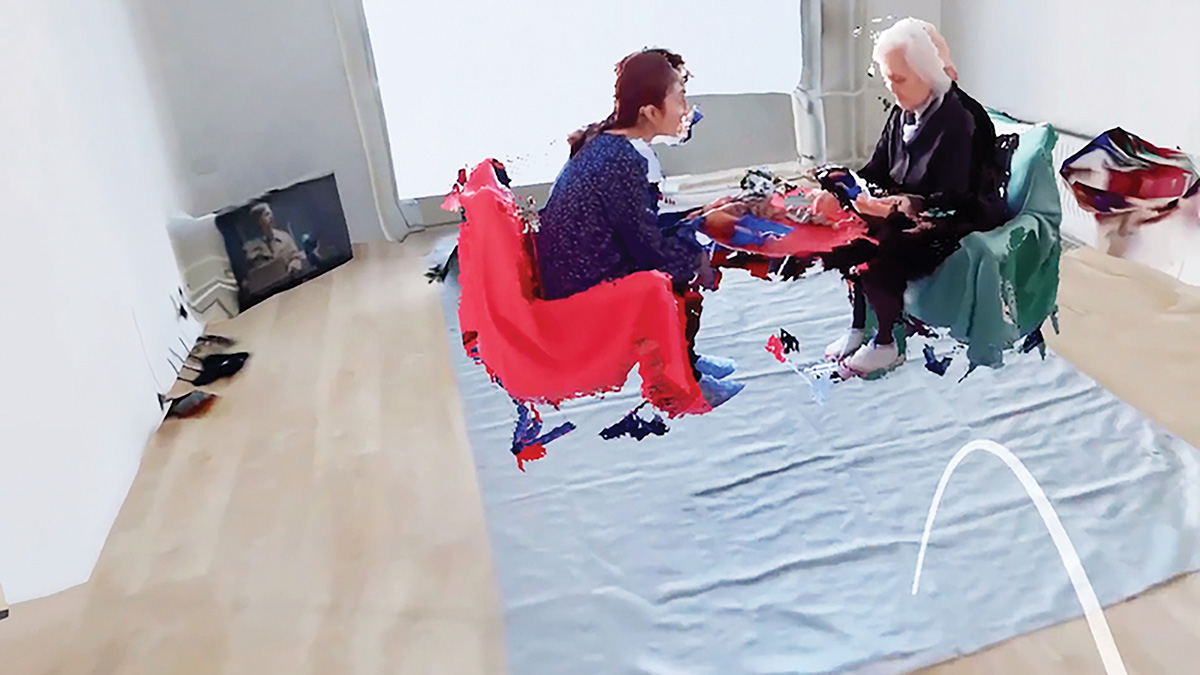
Timo Wright
Everyday Vrealities
Experimental VR | 4k | color | 0:0 | Finland | 2021
Everyday Vrealities is a virtual reality documentary about different kinds of families, homes and ways of life. The viewer can, using their VR-headset, walk freely around from home to home, and witness everyday scenes happening in front of them. The film consist of nine homes, each linked to another. The viewer can witness a father playing games with his daughter, a couple doing yoga, a mother helping her son do his homework, an elderly mother teaching her daughter how to make pottery, a kid doing somersaults, a family with their newborn etc. The viewer can also re-enter some of the rooms to see new scenes. In the film there are no interviews or backstories. It is not a film of big emotions, but more of reflections and observation. It is in a sense “slow tv”, with seemingly nothing much happening. We can using the free movement in the space to quietly observe an everyday event unfolding, and even revisit it later if we want. The combined length of all clips is around 50 minutes.
Timo Wright is a media artist based in Helsinki, Finland. Noteworthy exhibitions include e.g. Nakanojo Biennale, Nikolaj Kunsthal, Kunsthall Charlottenborg, Samuelis Baumgarte Galerie, Galerie Anhava, Helsinki Art Museum, Helsinki Design Museum, Amos Anderson Art Museum, Kunsthalle Helsinki as well as festivals such as IDFA, Slamdance, Nordisk Panorama and International Film Festival Rotterdam. His films have been shown at over 80 festivals and exhibitions worldwide.
Pascal Piron, Karolina Markiewicz : Metamorphosis - Experimental VR | 4k | color | 24:0 | Luxembourg | 2021
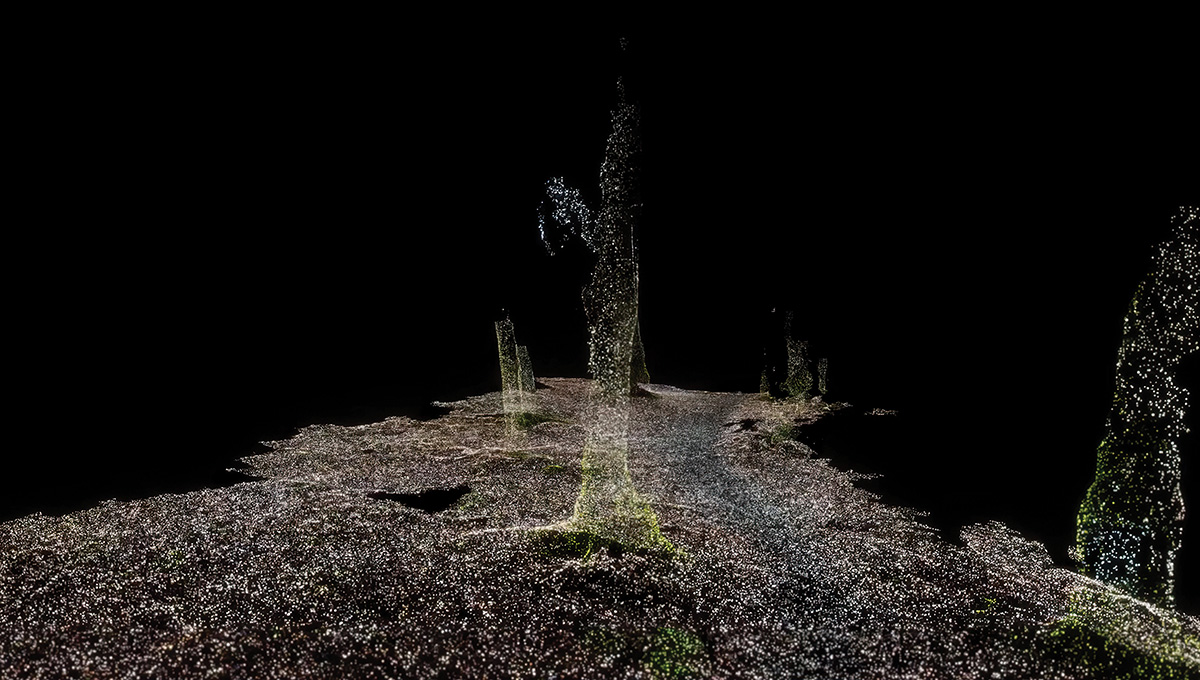
Pascal Piron, Karolina Markiewicz
Metamorphosis
Experimental VR | 4k | color | 24:0 | Luxembourg | 2021
METAMORPHOSIS is a location based experience in virtual reality. It thematises the state of fear, astonishment and need for human exchange, as well as the the new comprehension and the physical reduction of the world during an ontological rupture such as the Coronavirus pandemic. In History (from the Antique with the first plague to Modern times with the Spanish flu) every kind of epidemic or pandemic has brought significant changes in societies, people had to adapt and reinvent their lives exchanging as they could. The experience refers to this kind of societal metamorphosis that imply on one hand the awareness of a reduced and different environment as well as related to the exchange of different ideas about the future . For METAMORPHOSIS, different nature and urban places (outside and inside) have been scanned and recreated as 3D scenes in a point cloud aesthetic. These eight scenes form a large corridor that brings the visitor slowly through different stories and ideas. From naive, stunned to more elaborate projections about the future of existence.
Since 2013 Karolina Markiewicz (born in 1976 in Luxembourg, lives and works in Luxembourg) and Pascal Piron (born in 1981 in Luxembourg, lives and works in Luxembourg) have been developing a collaborative body of work that stretches across cinema, visual arts and theatre. At its centre lies the individual as part of the human community, torn between resignation and hope. In their poetically charged investigations, the two artists question contemporary myths and construct metaphorical narratives based on past events.
Monika Maslon : Control Negative - Experimental VR | 0 | color | 40:0 | Poland | 2022
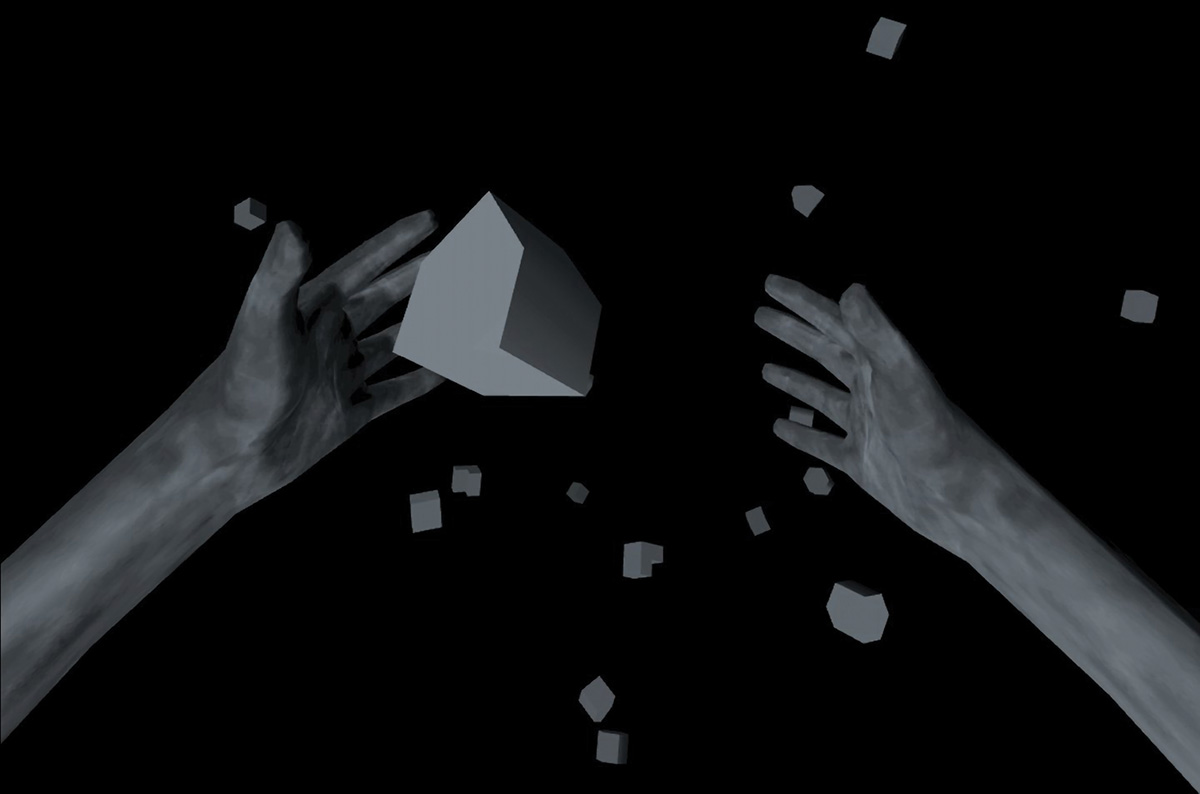
Monika Maslon
Control Negative
Experimental VR | 0 | color | 40:0 | Poland | 2022
The CONTROL NEGATIVE experience is an exercise in a loss. Using VR technology, author Monika Mas?o? situates the viewer in an emotional state where frustration, helplessness, anger, and sadness are used to reveal basic human assumptions, including the illusory conviction of being fully in control of one's own life. The unreal world of the experience — a negative version of the real world — is a training space where you can better understand yourself and your emotions. The user is guided through seven chapters, which gradually move from physical activity to contemplation.
Dr. Monika Maslon (born 1982) - visual artist and art educator. She graduated from the Academy of Fine Arts in ?ód? and Ph.D. studies at the Film School in ?ód?, where she completed her Ph.D. thesis entitled “Do zobaczenia” (See you), under the supervision of Prof. Józef Robakowski. She is a lecturer at the University of Leipzig and the Maria Grzegorzewska University in Warsaw where she conducts classes with the students of the department of Arts education in fine arts. In 2014 she stayed at an artistic residence in Singapore, where she made an artistic project called “Comfort of Long-Distance Perceiving”. In 2016 she implemented the project “Template - a tool to learn how to use an image”, as a part of a scholarship awarded by the Ministry of Culture and National Heritage. The scope of her art activities is manifested mainly through realizations based on audiovisual material. She participated in numerous exhibitions and shows. She is the author of the VR experience - CONTROL NEGATIVE.
Omid Zarei, Anne Jeppesen : A Vocal Landscape - Experimental VR | 0 | color | 14:0 | Denmark, France | 2023
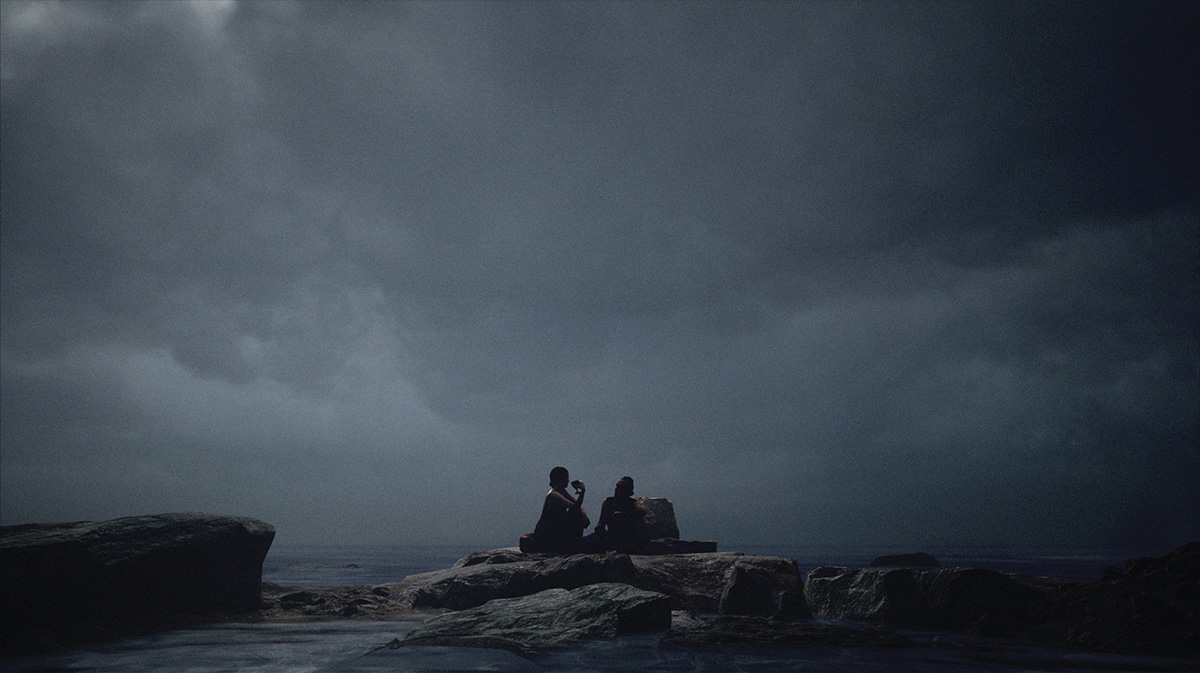
Omid Zarei, Anne Jeppesen
A Vocal Landscape
Experimental VR | 0 | color | 14:0 | Denmark, France | 2023
A Vocal Landscape is a hyperrealistic VR experience that explores the strange anatomy of a conversation between two people. In a dreamlike journey, the spectator travels through an ever-changing room depicting their associations and unspoken interactions.
Omid Zarei is a French-Iranian artist and XR producer on the quest to explore alternative ways of storytelling. He creates projects that blur the boundaries of different platforms, creating a space for collaboration between artists from a diverse range of disciplines. In 2015 he developed VR filmmaking workshop in Helsinki, one of the first VR focused workshops in Europe. He is the creator of the project Songs of Future Past, a re-imagined VR take on Opera. Anne Jeppesen is a Copenhagen-based producer with a focus on audio documentaries. She has produced audio productions for national radio, as well as immersive audio experiences for museums and theatre. With a background in classical music and musicology, Anne is driven by a never fading fascination for the richness of the human voice and is constantly seeking out new ways to work with vocal expressions. Their latest joint project “A Vocal Landscape” won an EPIC MegaGrants and a special prize in Vancouver International Film Festival for a collaboration with Microsoft Mixed Reality Capture Studio.
Federico Solmi : The Bacchanalian Ones - Experimental VR | 0 | color | 0:0 | USA | 2021
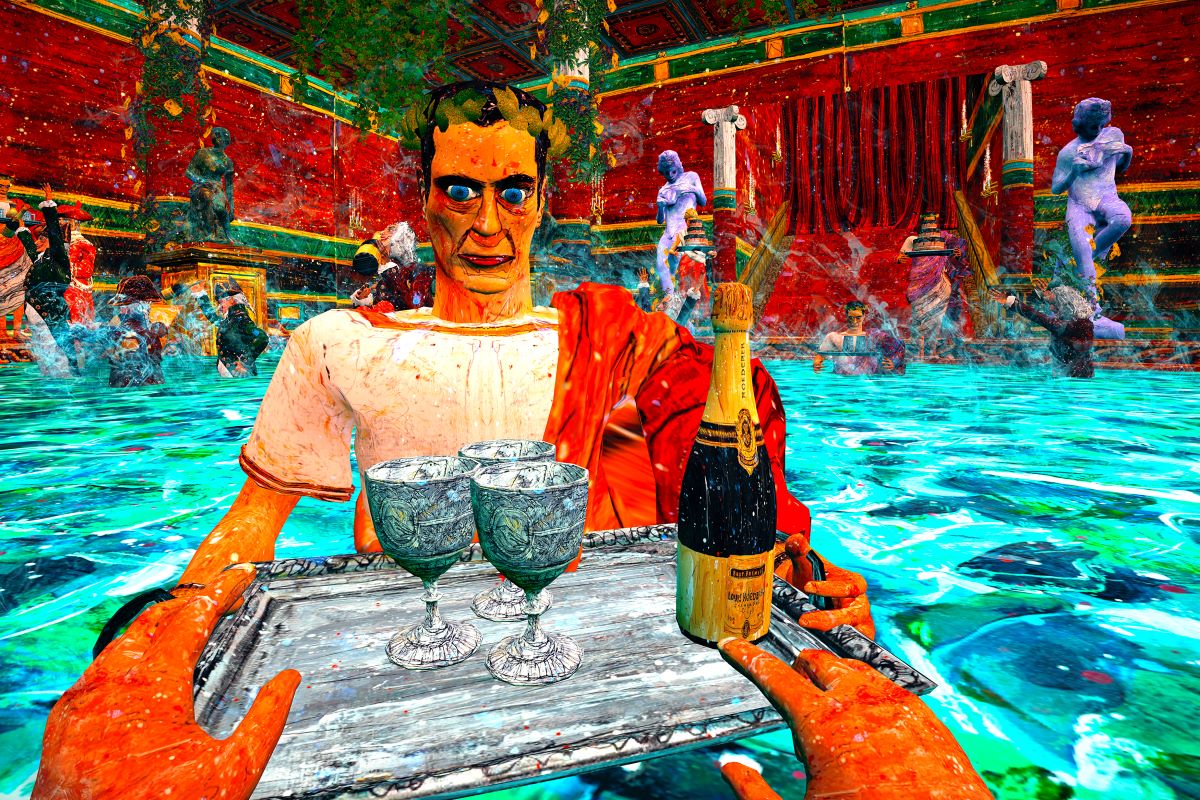
Federico Solmi
The Bacchanalian Ones
Experimental VR | 0 | color | 0:0 | USA | 2021
The Bacchanalian Ones, VR Experience for Oculus Quest 2 Inspired by ancient mythology, modern myth, and contemporary celebrity culture, The Bacchanalian Ones compares the historical myth with a satirical mash-up of the powerful self-absorbed who preen and wallow in a banal spectacle of their own creation. In a fantastically opulent setting of unrestrained hedonism, political, religious, and military leaders with ghoulish, bouffonesque appearances are surrounded by social elite sycophants like the devotees of the cults of Bacchus and Dionysus. Solmi’s phantasmagoric world of whirling space, jerking movement, and oscillating facades that strive to overwhelm the viewer’s visual field is pushed to extremes in a new interactive Virtual Reality installation. This work invites the visitor to enter the Bacchanal by donning a VR mask and manipulating two hand-held controllers in order to pick the perspective of one of his historical avatars. Newly empowered, and emboldened, the visitor is able to control the narrative, allowing them to experience the debauchery up close and personal through their embodiment of the avatar.
Federico Solmi was born in Bologna, Italy in 1973. Since 1999 he has lived and worked in New York. Solmi’s work utilizes bright colors and a satirical aesthetic to portray a dystopian vision of our present-day society. His exhibitions often feature articulate installations composed of a variety of media including virtual reality experiences, video installation, painting, drawing, and sculpture. Solmi uses his art as a vehicle to stimulate a robust conversation with his audience, highlighting the contradictions and fallibilities that characterize our time. In 2009, Solmi was awarded by the Guggenheim Foundation of New York with the John Simon Guggenheim Memorial Fellowship in the category of Video & Audio. Solmi’s work was included in the 100-year anniversary exhibition of The Phillips Collection, Seeing Differently, and in the Smithsonian National Portrait Gallery’s traveling exhibition, Outwin 2019: ‘American Portraiture Today,’ as well as the inaugural exhibition of the Ocean Flower Museum Island in Hainan Province, Danzhou, China. From 2016 to 2019 Federico Solmi was visiting Professor at Yale University School of Art, and Yale School of Drama, New Haven CT. Solmi was appointed guest critic at the Yale University School of Art for 2022.
Wojciech Pus : Endless - Vr Segue - VR 360 video | 0 | color | 18:0 | Poland | 2022
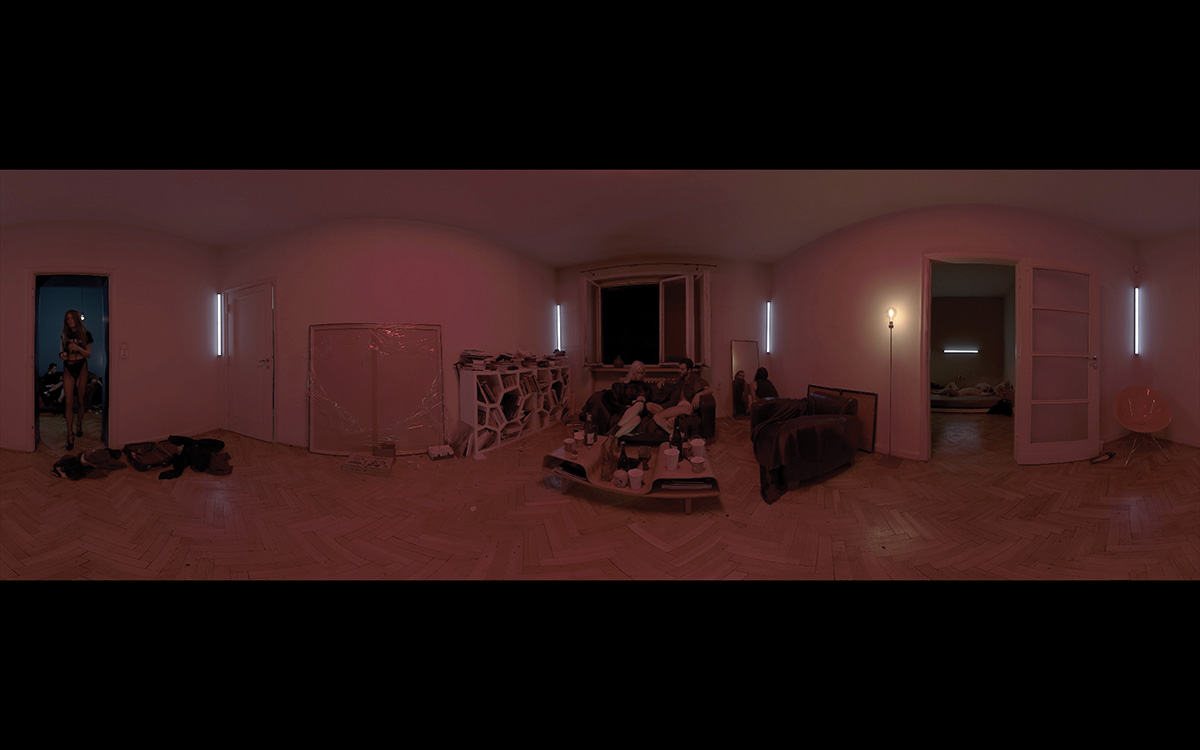
Wojciech Pus
Endless - VR Segue
VR 360 video | 0 | color | 18:0 | Poland | 2022
A queer poem about gender transformations, hallucinogenic desires, and uncanny relationships. It’s past dawn, in an apartment inhabited by several figures. They are frozen in time, frozen in the movements they were making. They look at each other, caress each other, sleep, masturbate with VR helmets on their faces. In one magical moment, they come to life and start a languidly intoxicating party. In Wojciech Pu?’s essayistic 360° film, we follow several people of different genders and ethnic identities as they navigate a path through night, life, desire, and futility. Fragments of their stories are only fleetingly revealed in poetic speeches that resemble a verbal symphony rather than a narrative. The director builds the experience on hallucinogenic light work and uncomfortable camera movements. Will this party ever end, or have we found ourselves trapped with the characters in a labyrinth of existence that has no end?
Wojciech Pu? - filmmaker and artist. They work with moving images and sound. Their films/installations/live acts have been screened / exhibited / shown at Warsaw’s Museum of Modern Art, Haus der Kulturen der Welt in Berlin (Rencontres Internationales Paris/Berlin), ICA in London, Museé du Louvre in Paris (Rencontres Internationales Paris/Berlin), Foksal Gallery in Warsaw, Art Museum in Lodz, Urban Glass in New York, A:D: Curatorial in Berlin, Spike Art Magazine / Yvonne Lambert in Berlin and Exchange Gallery in Lodz. Professor at the Cinematography Department in Lodz Film School, Poland.
Doireann O'malley : New Maps Of Hyperspace - VR 360 video | 4k | color | 6:44 | Ireland | 2020

Doireann O'malley
New Maps of Hyperspace
VR 360 video | 4k | color | 6:44 | Ireland | 2020
The work is a parable on Alan Turing’s technological disembodiment, drawing on concepts from Terrence McKenna’s Hyperspace, an undoing of the matter of consciousness and technologies empty promises of liberation and progress. Imagining a future self calls for a dreaming of the kind Terence McKenna evokes in his essay New Maps of Hyperspace (1989) and from which this work formed the research. For McKenna the dream is “zero time” and “outside of history.” It is analogous to the speculative experience of hyperspace, a scifi term given to the space-time continuum in which it is possible to travel faster than light. In both states, time appears to stand still (Einstein’s theory of relativity tells us that the closer an object travels to the speed of light the slower time becomes). Dreaming can quickly turn to nightmare however, and the episodic repetition of history-as-nightmare can, at times, feel like farcical simulation. Finally this work touches on the yawning gaps between our wish for escape, human connection and approval — and our seemingly Sisyphean task of achieving any of it. Hyperspace is a notion from science fiction of a superluminal method of travel. It is typically described as an alternative “sub-region” of space co-existing with our own universe which may be entered using an energy field or otherdevice. In most fiction, hyperspace is described as a physical place that can be entered and exited. Whereas in the VR work the viewer is essentially trapped in blue screen of death, unable to escape. (Text by Thomas Butler)
Doireann O’Malley (born 1981 in Limerick, IE) is a multidisciplinary artist based in Berlin. Their research-led practice unites collaborative methodologies, healing and reparative movement, writing, and theory, with a strong technological emphasis on new media, virtual Reality, 3Dand film installation. O’Malley holds an MFA from University of Ulster in Belfast, UK. From 2021- 2022 held the position of Professor of Gender & Space at Akademie der bildenden Künste Wien. They were a research fellow at the Berliner Förderprogramm Künstlerische Forschung (2020-2021) and a participant of the BPA// Berlin programme for artists (2019-2020). They acted as a guest mentor on the The Live Arts MA / AdBK Nuremberg (2001) Their exhibitions, talks and screenings have been presented at IMMA, Dublin, IE; Art Institute, Basel, CH; Biennale Zielona Góra, PL; Goethe-Institut Montreal, CA; Goethe-Institut, NY, USA; Neuer Berliner Kunstverein (n.b.k.), Berlin, DE; National Sculpture Factory/Cork Film Festival, Cork, IE; GöteborgInternational Biennial for Contemporary Art, SE; Rencontres Internationales, Forum des Archives, Paris, FR & HKW, Berlin, DE; Mumok Kino, Vienna, AT; Dublin City Gallery, Dublin, IE; KW Institute for Contemporary Art, Berlin, DE; Berlin Art Prize, 2018, Berlin, DE; Edith-Russ-Haus für Medienkunst, Oldenburg, DE.
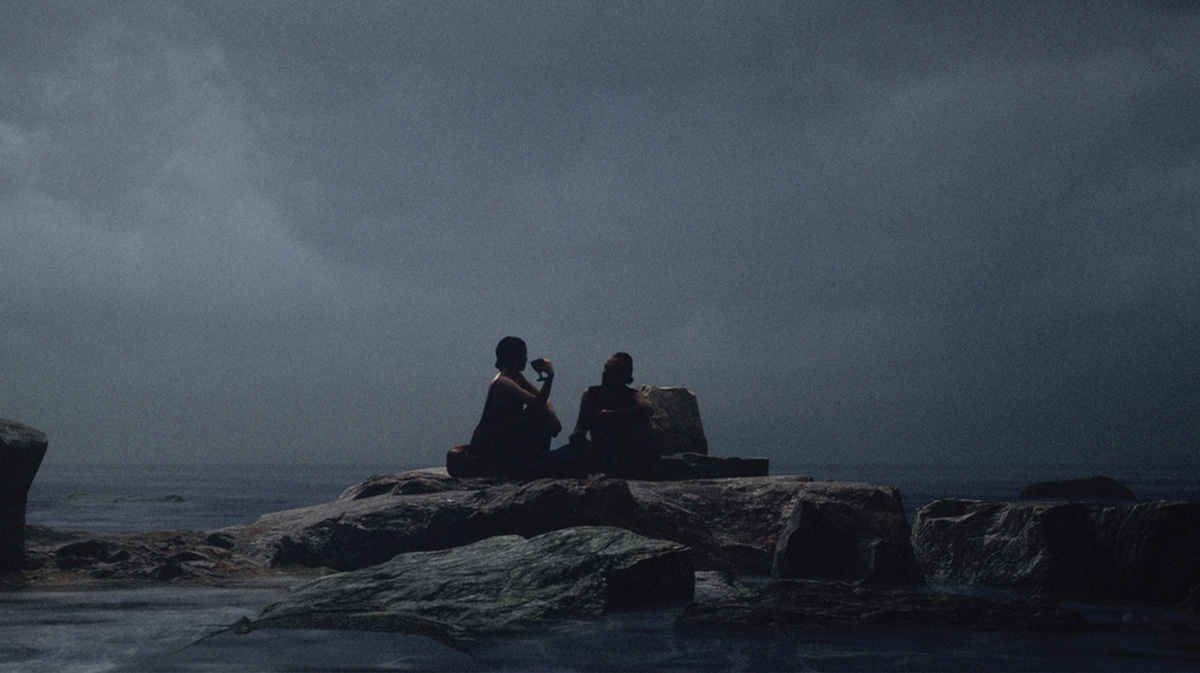
Forum
Haus der Kulturen der Welt | Safi Faye Hall
John-Foster-Dulles Allee 10, 10557 Berlin / Subway: lines S5, S7, S9, S75, station: Hauptbahnhof
Free admission
Artist talks
The guest artists present their work and research, and talk about the state of their artistic practice in their countries, which are sometimes in transition or undergoing profound changes.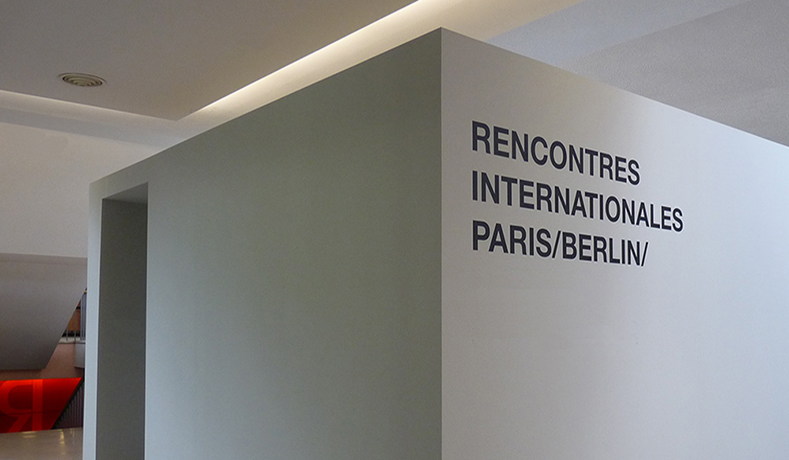
Screening
Haus der Kulturen der Welt | Safi Faye Hall
John-Foster-Dulles Allee 10, 10557 Berlin / Subway: lines S5, S7, S9, S75, station: Hauptbahnhof
Free admission
"The Space is Dreaming"
Loic Vanderstichelen, Jean-Paul Jacquet : Ok Boomer - Fiction | 4k | color | 10:15 | Belgium | 2022
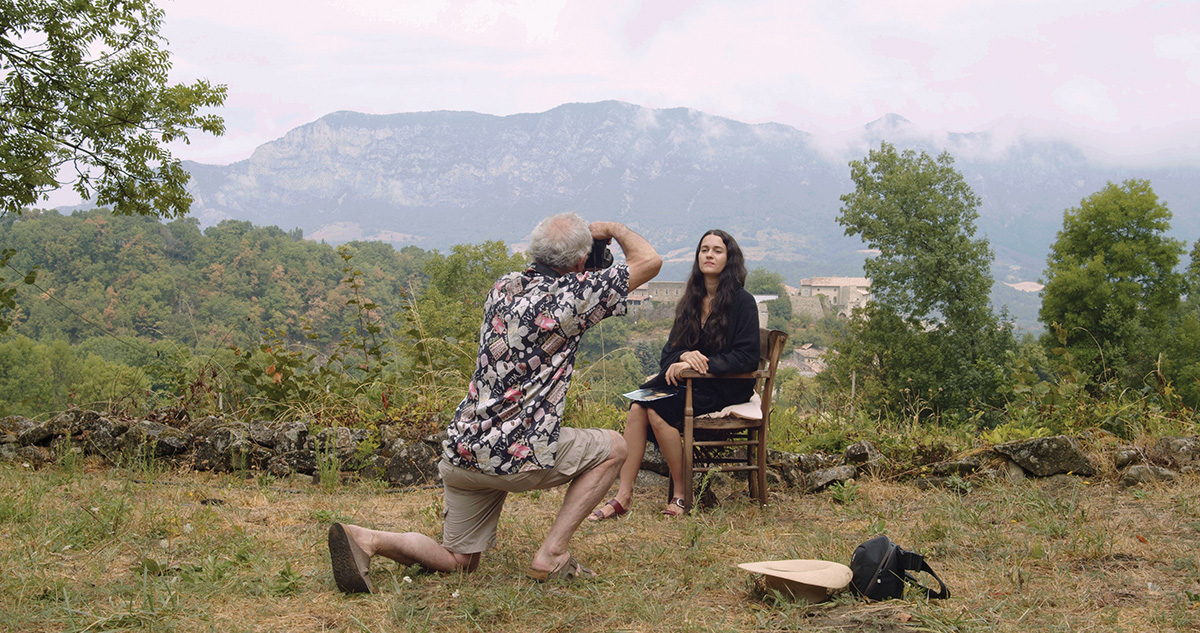
Loic Vanderstichelen, Jean-Paul Jacquet
OK boomer
Fiction | 4k | color | 10:15 | Belgium | 2022
C'est de l'été dernier que date le retour probable du lyrisme. Personne n'y pensait plus, on lui avait substitué la forme épique, on s'en était vite lassé et depuis on pataugeait dans celle dont je ne sais plus qui avait eu la pas très bonne idée de l'appelé dramatique. Tellement dramatique que tout était calme, jusqu'à cette après-midi à la campagne où nous pûmes constater les signes avant-coureurs de ce lyrisme tant convoité de quand l'artiste pre?sente son objet en rapport imme?diat avec lui-me?me. Il nous incombait dès lors d'adapter cette intuition remarquable vers quelque chose de plus rationnel et trouver un titre était la première chose à faire pour authentifier tout cela. D'où le trajet à la poste.
Loïc Vanderstichelen est un cinéaste qui vit et travaille à Bruxelles. Il réalise des films seuls ou en collaboration depuis 1993. Jean-Paul Jacquet est un historien de l’art qui vit et travaille à Bruxelles.
Claudia Joskowicz : La Niña De Sus Ojos - Video | 4k | color | 18:32 | Bolivia, USA | 2022
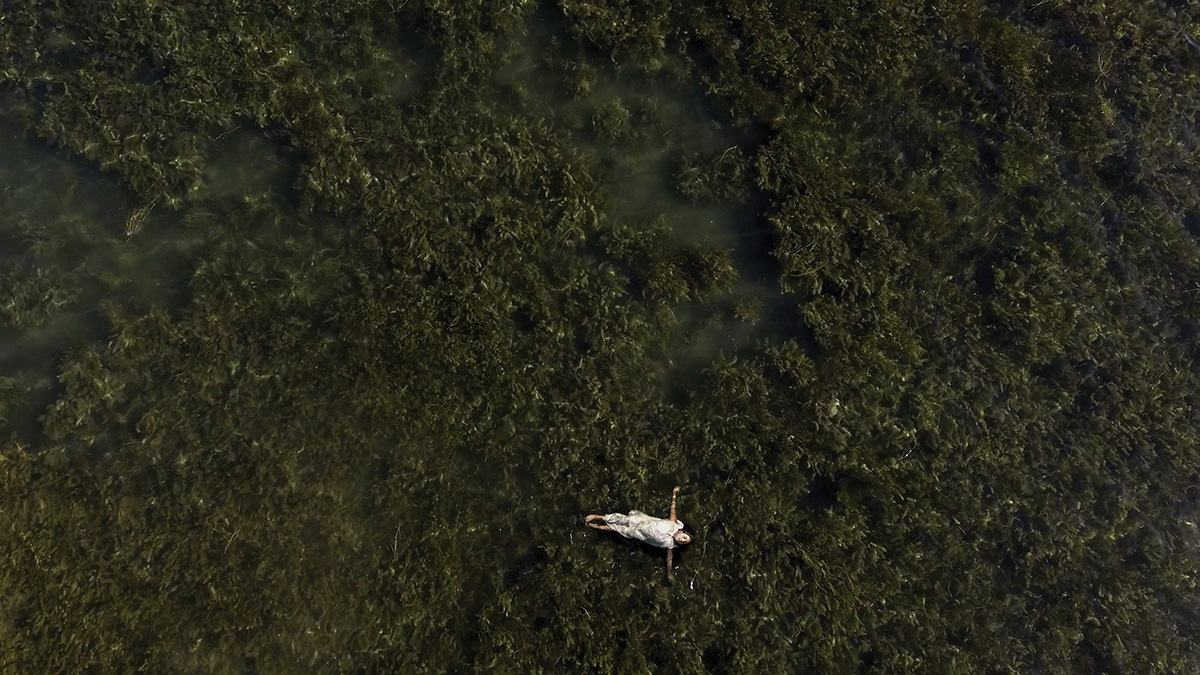
Claudia Joskowicz
La niña de sus ojos
Video | 4k | color | 18:32 | Bolivia, USA | 2022
La niña de sus ojos (2022) appropriates fragments of the Bolivian folk novel of the same name (Antonio Díaz Villamil, La Paz 1948), that formed an important part of the discourse popular amongst the Bolivian intellectual elites of the period directly preceding the 1952 revolution. The novel, still in use in national pedagogy today, reflects the misogynistic and racist lens that was, and still is, used to impart seemingly democratic projects in Bolivia. Using the house - and home - as a narrative device, along with descriptions of the novel's main characters and the contemporary city of El Alto, this work seeks to locate the viewer between the unrealistic stereotypes described in the book and the true context of El Alto, highlighting the void that still exists today, over half a century later, between political discourse and enacted change.
Claudia Joskowicz is an artist who works primarily with film, video, installation and digital media. Her practice centers on history and its narrative, considering how popular media circulates and shapes collective memory, contemporary history and social realities. Using long and slow video footage and oscillating between film and photography, she reproduces moments captured from global collective memories and personal stories (her own and others’) that have a historical dimension and are anchored in her native Latin American landscape. For most of her career, she has focused on the Latin American landscape, producing work in her home country of Bolivia and South America at large. Her early video work was staged as minimalist reenactments - with attention to the figure and the landscape and focusing on gesture and subtle movement - and has moved towards re-imagined cinematic stagings of landscapes, urban and otherwise, where nuanced political drama unfolds in real time. The landscape and built environment are main characters throughout her work, as are her medium’s structural elements, drawing attention to the media’s role in constructing historical events, and our memories of them. Joskowicz has exhibited widely in the United States and internationally and her work is in the permanent collections of the Guggenheim Museum, NY; the Kadist Foundation, San Francisco, the Cisneros Fontanals Foundation, Miami, and the Banco Central de la República, Bogotá. Joskowicz has received numerous awards and grants including a NYFA Fellowship in film/video, an Anonymous Was a Woman Award, a Cisneros Fontanals Foundation Mid-Career Artist’s Commission, a Guggenheim fellowship in film/video, and a Fulbright Scholar award. She has been a fellow at Yaddo, the Latin American Roaming Art Project, Oaxaca, Mexico, the Sacatar Institute, Bahia, Brazil, the AIM program at the Bronx Museum of the Arts, NY and the LMCC’s Workspace and Paris residencies.
Elisa Giardina Papa : U Scantu: A Disorderly Tale - Experimental video | 4k | color | 13:0 | Italy | 2022
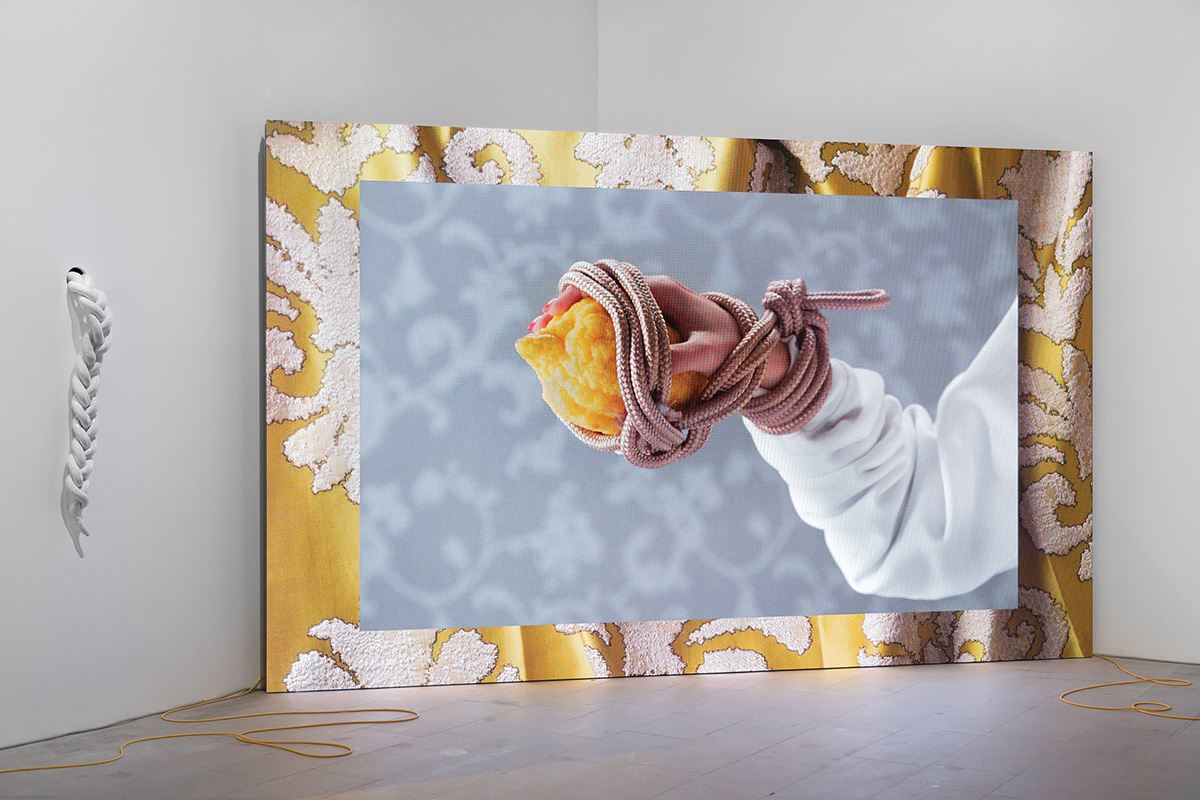
Elisa Giardina Papa
U Scantu: A Disorderly Tale
Experimental video | 4k | color | 13:0 | Italy | 2022
“U Scantu”: A Disorderly Tale (2022), presented as a video installation at 59th International Art Exhibition of La Biennale di Venezia, reimagines the Sicilian, queer, multispecies myth of the "donne di fora" (“women from the outside and beside themselves”). Described as both magical and criminal, the "donne di fora" were said to possess both the feminine and masculine; the human and the animal; the benevolent and the vengeful. This film envisions the "donne di fora" as a gang of teenage “tuners” who ride through the utopian city of Gibellina Nuova (Sicily) on bikes customized with disruptive sound systems. The narrative voyage of the “tuners” is interspersed with poetic text and visual motifs from a 19th century collection of Sicilian fairy tales, Giardina Papa’s fragmented childhood memories of songs and stories told by her grandmother, and archival material from the Inquisition trials of the 16th and 17th centuries that criminalized women accused of being a "donne di fora". “U Scantu”: A Disorderly Tale repurposes the magical, ritualistic, and unruly as forces that generate an imagination beyond predetermined categories of humanness, chronological time, and mythological womanhood.
Elisa Giardina Papa’s research-based practice investigates the performance of gender, sexuality, and labor. Working across large scale video installations, drawings, sculptures, and theoretical texts, she documents how past and present forms of capitalism have extracted our capacities for labor and living—including sleep, intimacy, and emotion. With witty and poetic framing, her work calls attention to those parts of our lives, desires, and embodiments that remain radically unruly, untranslatable, and incomputable. Her work has been exhibited and screened at the 59th International Art Exhibition of La Biennale di Venezia (The Milk of Dreams), the Museum of Modern Art (MoMA’s Modern Mondays), the Whitney Museum (Sunrise/Sunset Commission), Seoul Mediacity Biennale 2018, Flaherty NYC, UnionDocs, and Pacific Film Archive (BAMPFA), among others. Giardina Papa received an MFA from RISD, and she is currently pursuing a PhD in film, media, and gender studies at the University of California Berkeley. She lives and works in New York and Sant’Ignazio, Sicily. Elisa Giardina Papa is also a founding member of the artist collective Radha May. Together with Bathsheba Okwenje and Nupur Mathur, they develop performances and art installations that reveal forgotten archives, hidden histories, and peripheral sites, exploring their relation to gender, and colonialism.
Baba Hillman : Mary Bauermeister: Light And Stone - Experimental film | super8 | color | 3:45 | Canada, France | 2022
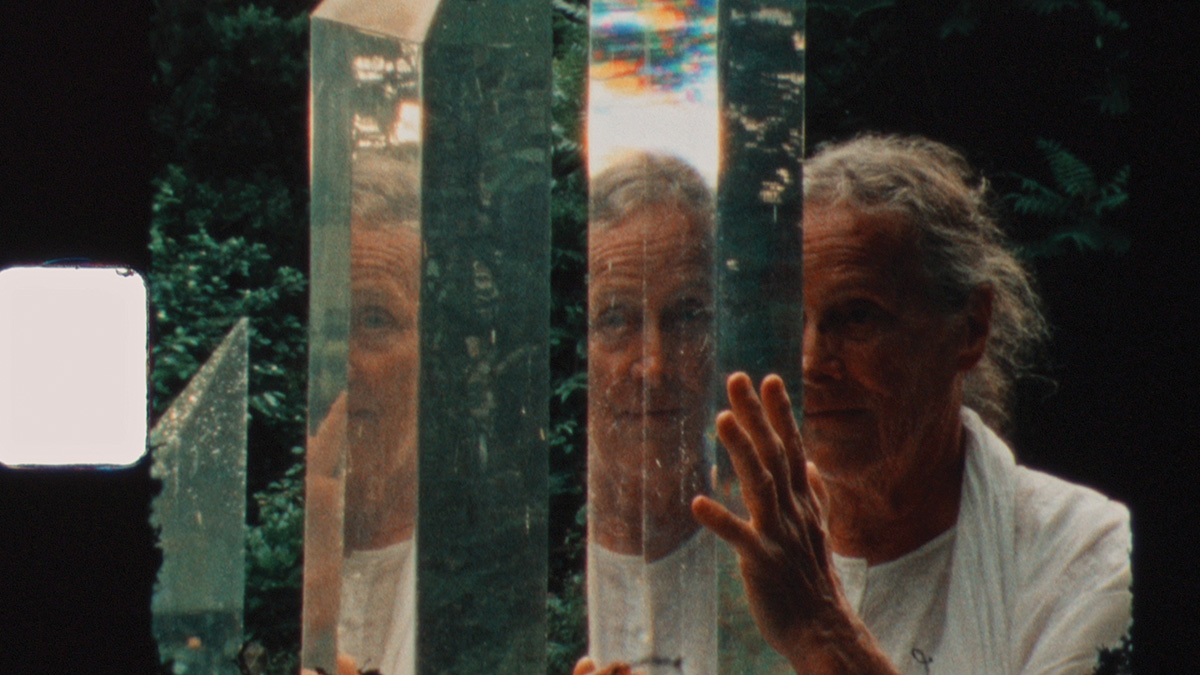
Baba Hillman
Mary Bauermeister: Light and Stone
Experimental film | super8 | color | 3:45 | Canada, France | 2022
Remembering my last visit with Mary in her garden of light, trees, glass and stone.
Baba Hillman grew up in Japan, Venezuela and Panama and works between France and the U.S.. She received a B.A. in French Literature from Duke University and an M.F.A. in Film and Performance from the University of California, San Diego. Her films and performance works explore memory, history, perception and the poetics and politics of place, language, and the body. She was co-director of Teatro Movimento in Florence, studied with Etienne Decroux and Jean-Pierre Gorin, and is Professor Emerita of Film at Hampshire College in Amherst, Massachusetts. Her films have screened widely at festivals and museums including the Museum of Contemporary Art, Los Angeles, FIDMarseille, Edinburgh Film Festival, Rencontres Internationales Paris/Berlin, Ann Arbor Film Festival, National Gallery of Art, Washington D.C., Anthology Film Archives, ICAIC Havana, Africa World Documentary Festival, Yaounde, MIX Brazil, and European Media Art Festival, Osnabruck, among others. She has received awards and grants from the French Ministry of Culture, the Whiting Foundation, the California Arts Council, and the Italian city governments of Florence, Lecce and Certaldo. In 2020, Hillman’s film Kitâb al-Isfâr: Book of the Journey, a feature-length film about near-death and mystical experiences in Andalucia, premiered at the FIDMarseille film festival and was selected for the Athens Avant Garde Film Festival. Earlier films by Hillman include Decroux’s Garden, and 5 Cité de la Roquette, part of a series of films connected to return, place and disappearance.
Arun Mali : Krzywy Las - Video | mov | black and white | 3:40 | France | 2022
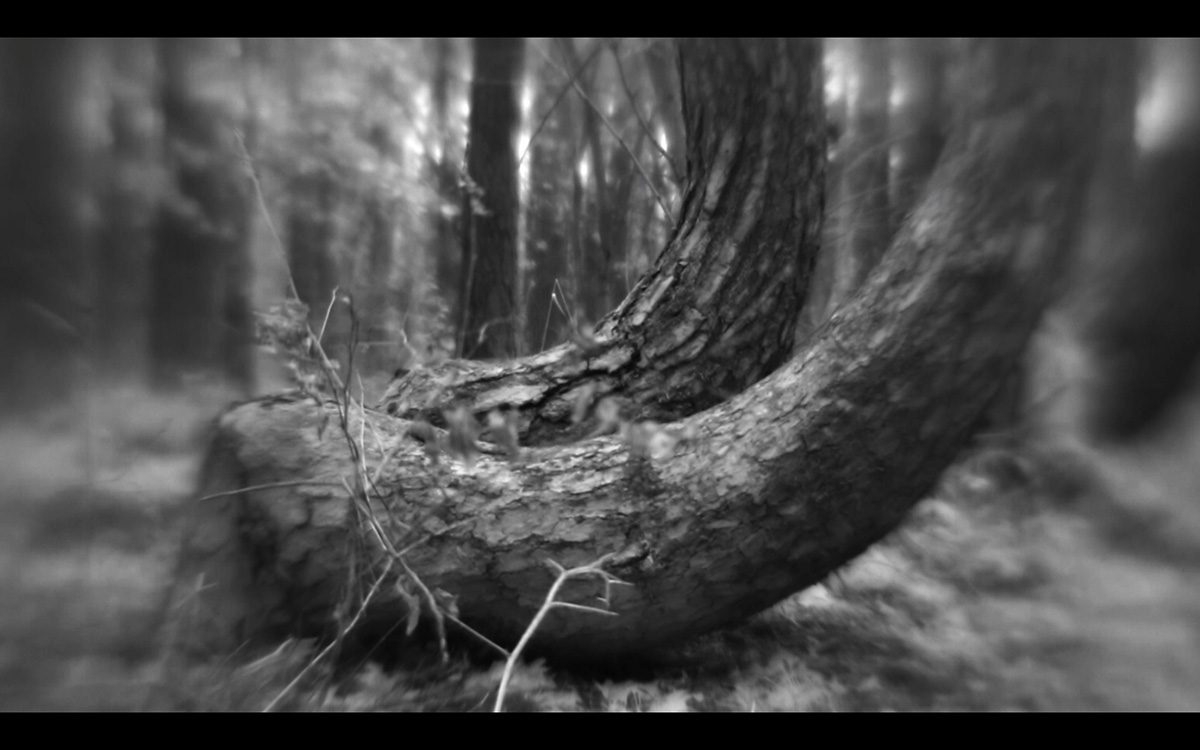
Arun Mali
Krzywy Las
Video | mov | black and white | 3:40 | France | 2022
Cette vidéo met en scène « La forêt aux arbres tordus » qui se situe en Pologne en bordure de la frontière nord allemande. À travers ce travail, j’observe la façon dont les traces d’un passé venant d’une légende ou d'un mythe, existent encore dans un temps contemporain. Cette forêt interroge et génère une forte dimension mystique, mystérieuse, imaginative et narrative. Est-ce une trace de la guerre, de la sorcellerie ou l’énergie d’un lieu qui a tordu si mystérieusement ces arbres ? Ou est-ce simplement l’action des Hommes ?
Artiste et réalisatrice, mon travail de l’image se situe entre la fiction, le cinéma documentaire et la vidéo d’art. Il questionne et explore les espaces en marges, en mouvements ou en conflits. Il interroge la façon dont l’être humain déraciné et déplacé arpente des zones de passages et de frontières, une façon mouvante d’habiter le monde, parfois fragile. J’explore les croyances, les rituels et les mythes dont les hommes se nourrissent pour vivre, survivre et construire leur identité.
Flatform : Approaches To A Theory Of Punctuation - Experimental video | 4k | color | 5:42 | Italy, USA | 2023
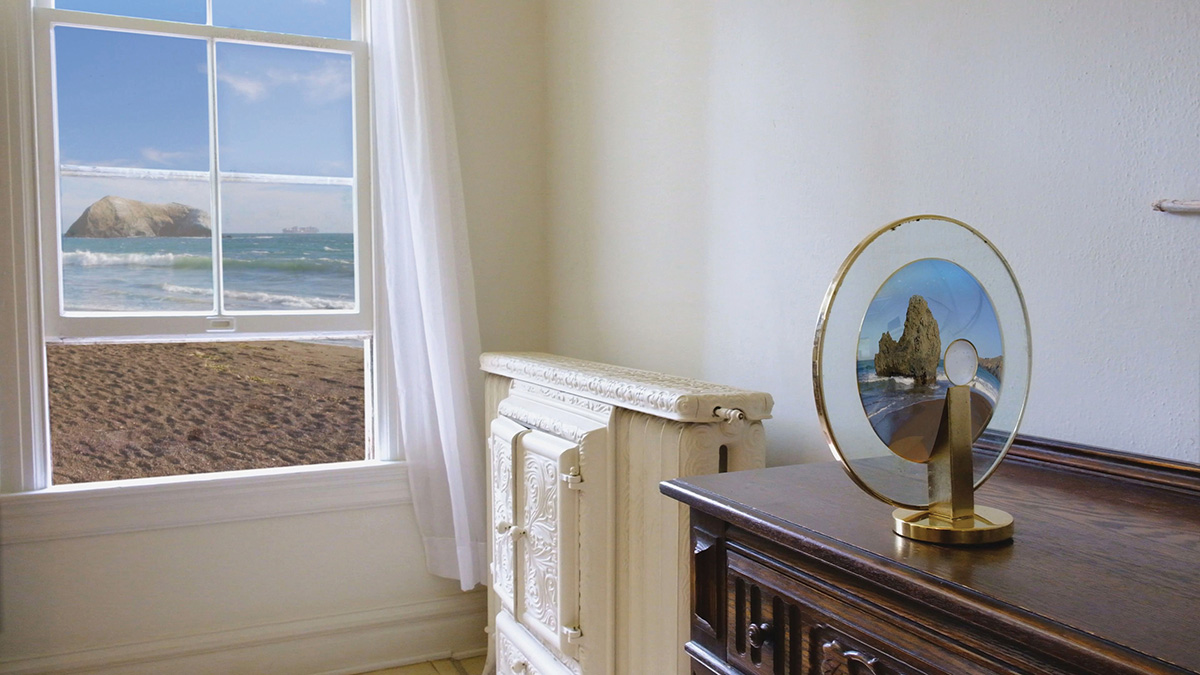
Flatform
Approaches to a Theory of Punctuation
Experimental video | 4k | color | 5:42 | Italy, USA | 2023
Approaches to a Theory of Punctuation speaks about quotes, punctuation and movement, all terms that have a musical connotation. In this work, the objects present in an internal environment reflect external places, and these reflections, like some sort of narration, are treated like quotes yet they are released from the expressive repetition that characterizes them. Here, the use of quotation marks as a visible and mental engine anticipates the landscape itself as a possible form of quotation. Furthermore, the continuously circling pan movement of the camera, is not treated as an autonomous essence, but becomes an interdependent system acting between the internal and external, capable of existing only by influencing other systems or objects. The internal is shot inside the house in which Flatform lived during the residency at Headlands Center for the Arts in Sausalito USA, and the external is shot in the bay outside. This film is dedicated to the memory of the american novelist Paul La Farge, narrating voice of the film.
Flatform is a collective artist based in Milan and Berlin, founded in 2006. Works by Flatform have been shown in many museums and institutions including, among others, Centre Pompidou in Paris, Hirshhorn Museum in Washington DC, Wexner Center for the Arts in Columbus Ohio, MAXXI Museum in Rome, Fondazione Prada in Milan, EMPAC Experimental Media and Performing Arts Center in Troy NY, Fondazione Sandretto Re Rebaudengo in Turin, Argos Centre for Arts in Bruxelles, Palazzo Grassi in Venice, MSU-Museum of Contemporary Art in Zagreb, Haus der Kulturen der Welt in Berlin, Cineteca Matadero in Madrid, Yerba Buena Center for the Arts in San Francisco, Eye Filmmuseum in Amsterdam, PAC in Milan, Museu da Imagem e do Som in San Paolo. Flatform has been invited in several film festivals including, among others, Quinzaine des Realisateurs de Cannes, Venice Intl. Film Festival, IFFR in Rotterdam, BFI Film Festival in London, LOOP in Barcelona, Festival du Nouveau Cinema in Montreal, Lo Schermo dell’Arte in Florence, IFF in Melbourne. Selected Awards: Go Shorts in Nijmegen 2020 and 2016; Nashville Intl Film Festival 2016, Jihlava Intl Doc Film Festival 2015, Lago Film festival 2010 in Lago, 25FPS 2009 in Zagreb, Screen Festival 2008 in Oslo.
Erin Johnson : To Be Sound Is To Be Solid - Experimental doc. | mov | color | 15:0 | USA | 2022
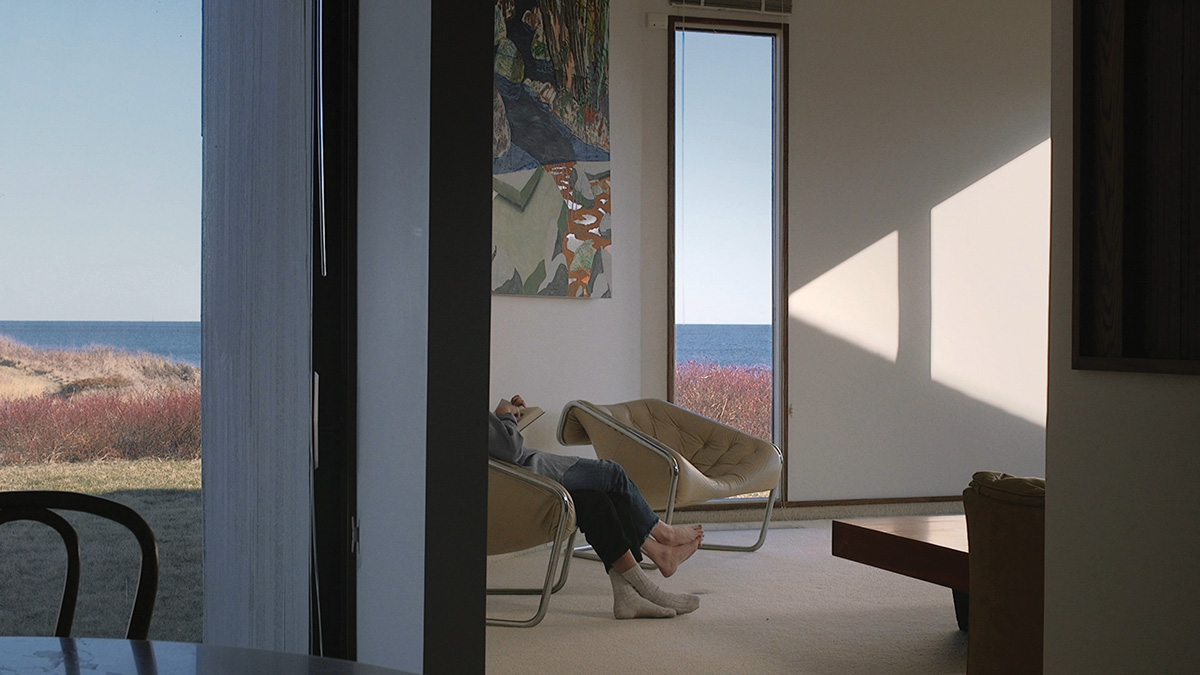
Erin Johnson
To be Sound is to be Solid
Experimental doc. | mov | color | 15:0 | USA | 2022
In To Be Sound Is to Be Solid (2022, 15 minutes), an oceanographer’s attempt to map the entire seafloor by 2030 parallels the filmmaker’s attempt to decipher the opaque queer history of a modernist seaside home through its complicated and circuitous floor plan.
Erin Johnson (b. 1985, US) is a visual artist and filmmaker based in New York who was recently named one of the "25 New Faces of Independent Film" by Filmmaker Magazine. Her short films and immersive installations explore notions of collectivity, dissent, and queer identity. In her shape-shifting videos, constellations of artists, biologists, and film extras address the imbrication of science and nationalism. Johnson received an MFA and Certificate in New Media from UC Berkeley in 2013, attended Skowhegan School of Painting & Sculpture in 2019, and recently completed residencies at Pioneer Works (Brooklyn, NY), Jan van Eyck Academie (Maastricht, NL), Lower Manhattan Community Council (LMCC), Hidrante (San Juan, PR), and Lighthouse Works (Fishers Island NY).

Loïc Vanderstichelen and Jean-Paul Jacquet have created a satirical comedy about the relationship between men and women, technology and art history. Claudia Joskowicz uses fragments of a popular Bolivian novel that influenced the discourse of Bolivian elites in the run-up to the 1952 revolution. The novel, which is still taught nationally today, reflects the misogynistic and racist point of view used in Bolivia up to the present day to disseminate apparently democratic projects. Drawing on Sicilian and North African oral culture and Inquisition archives, Elisa Giardina Papa re-imagines the Sicilian, queer and multi-species myth of the 'donne di fora', women described as both magical and criminal, believed to possess both the feminine and the masculine, the human and the animal, benevolence and vengeance. Baba Hillman remembers her last visit to the artist Mary Bauermeister, in her garden of light, trees, glass and stone. In Poland, close to the border with Germany, Arun Mali films "the forest of twisted trees" and observes how the legends and myths of the past still exist in the present. In an interior environment, Flatform films objects that reflect the outside world. These reflections become a narrative in which the landscape becomes a possible form of quotation. Erin Johnson draws a parallel between an oceanographer's project - to map the entire ocean floor by 2030 - and her own attempt to decipher the queer history of her modernist seaside house, designed in 1971 by a couple of women artists.
Screening
Haus der Kulturen der Welt | Safi Faye Hall
John-Foster-Dulles Allee 10, 10557 Berlin / Subway: lines S5, S7, S9, S75, station: Hauptbahnhof
Free admission
"Omen"
Mauridi Primo : Mawe - Experimental film | mov | color | 12:20 | Congo (RDC) | 2022
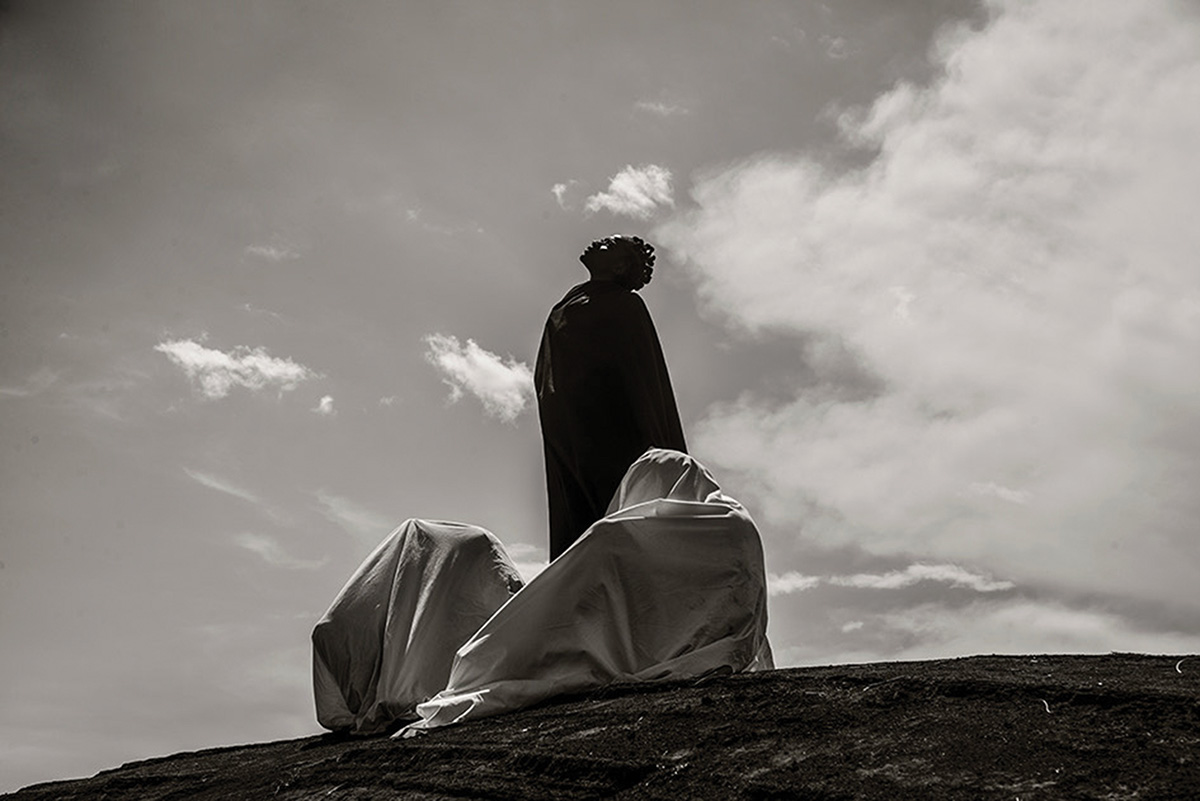
Mauridi Primo
Mawe
Experimental film | mov | color | 12:20 | Congo (RDC) | 2022
Grâce à un rituel de réveil, Nyabhingi la déesse de l’abondance s’élève du Liangombe souffle Mazuku. Elle doit guérir Goma(Rd Congo) de la destruction et rétablir l’écologie balance. Avec ses guerriers, Ils sont témoins de la désolation causée par l’arrogance industrielle qui a profané la terre, invoquant la fureur de Lingombe, l’esprit de discipline qui corrige tous les torts. Lingombe crache du feu et Mahindule (lave) pour avertir le peuple de ses transgressions.
Mauridi Primo est un photographe et cinéaste originaire de Goma (RDC Congo). Comme un jeune artiste qu’il a fait son apprentissage pendant plusieurs années au centre culturel Yole Africa!, sous la supervision pédagogique et artistique de la cinéaste et activiste Petna Ndaliko Katondolo. il a participé IXes Jeux de la francophonie avec sa réalisation nommer (Mobembo). il a été avec son film Bila Mask au Festival film Congo in Harlem, et cette même année, il a remporté l’Académie Canon VII bourse. En avril 2022, il participe à la rencontre numérique internationale La Rencontre Internationale des Arts Numériques et Visuels à Abidjan.
Clara Jo : De Anima - Experimental doc. | 0 | color | 29:35 | Germany, Myanmar | 2022
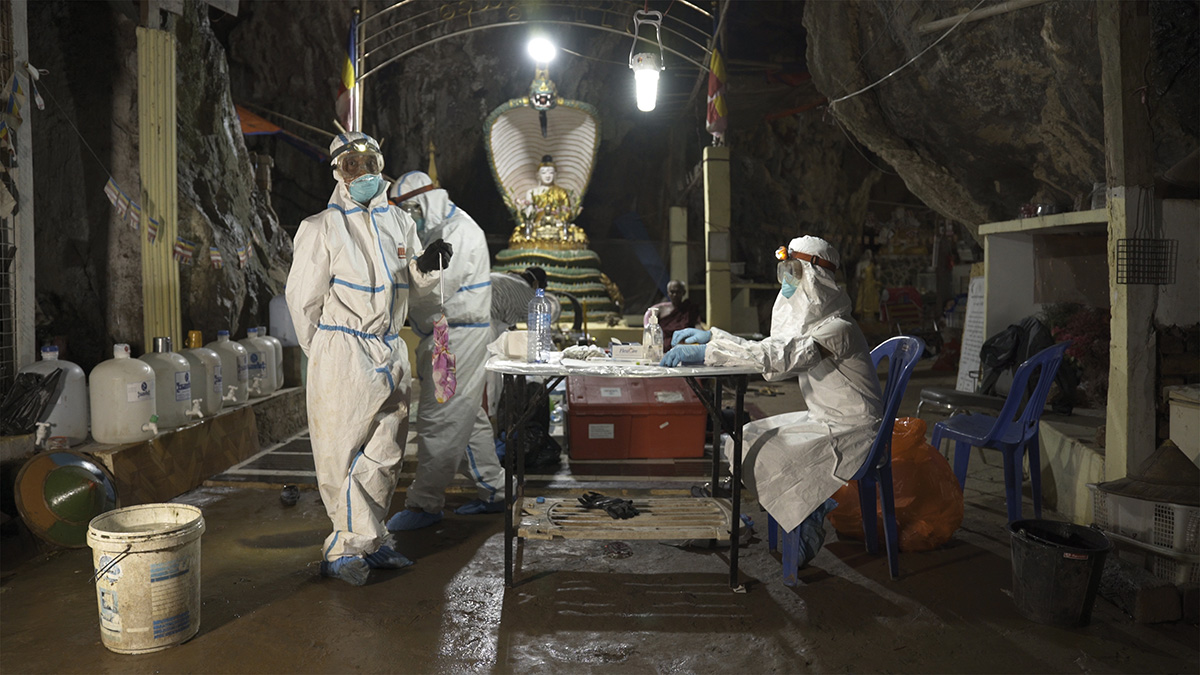
Clara Jo
De Anima
Experimental doc. | 0 | color | 29:35 | Germany, Myanmar | 2022
"De Anima" spans documentary and animation and features a dreamlike narrative examining how various gendered, racialized, economic, and metabolic systems embedded within the global health system—which have become especially apparent during the COVID-19 crisis—drive fear of contamination from the nonhuman world. The work’s departure point is Jo’s 2018 field research in Myanmar with Smithsonian wildlife veterinarians who were hunting for new strains of coronavirus to predict their pandemic potential. The sacred caves depicted in "De Anima" are both high-risk interfaces as well as sites of spiritual encounter between humans and animals, science and religion, nature and politics—interfaces where ecosystems cross and feed into global conflict. This behind-the-scenes work had been underway for years, and sheds light on the inevitable: not of a why but an unknown when—offering an ominous prelude to the current global health crisis. Recorded in Myanmar, Kenya, and France, the images and sounds featured in "De Anima" that once felt so ‘far away’ now deeply resonate in the everyday. The work exposes subtexts that reveal deeper issues embedded within society at large, namely the neglect and treatment of health beyond the human in an era of accelerated globalization.
Clara Jo's work has been exhibited and screened her work at Gropius Bau (Berlin), Centre Pompidou (Paris), ARKO Art Center (Seoul), Royal Academy of Arts (London), Spike Island (Bristol), Hamburger Bahnhof (Berlin), and Edith-Russ-Haus für Medienkunst (Oldenburg). She has previously held fellowships and residencies at Art Explora (Paris), Akademie Schloss Solitude (Stuttgart), and the Smithsonian Artist Research Fellowship (USA). She has presented her work for talks at the Centre Pompidou (Paris), Stedelijk Museum (Amsterdam), and King’s College (London).
Eli CortiÑas : I‘ve Always Demanded More From The Sunset - Video | mov | color and b&w | 4:0 | Spain, Germany | 2022
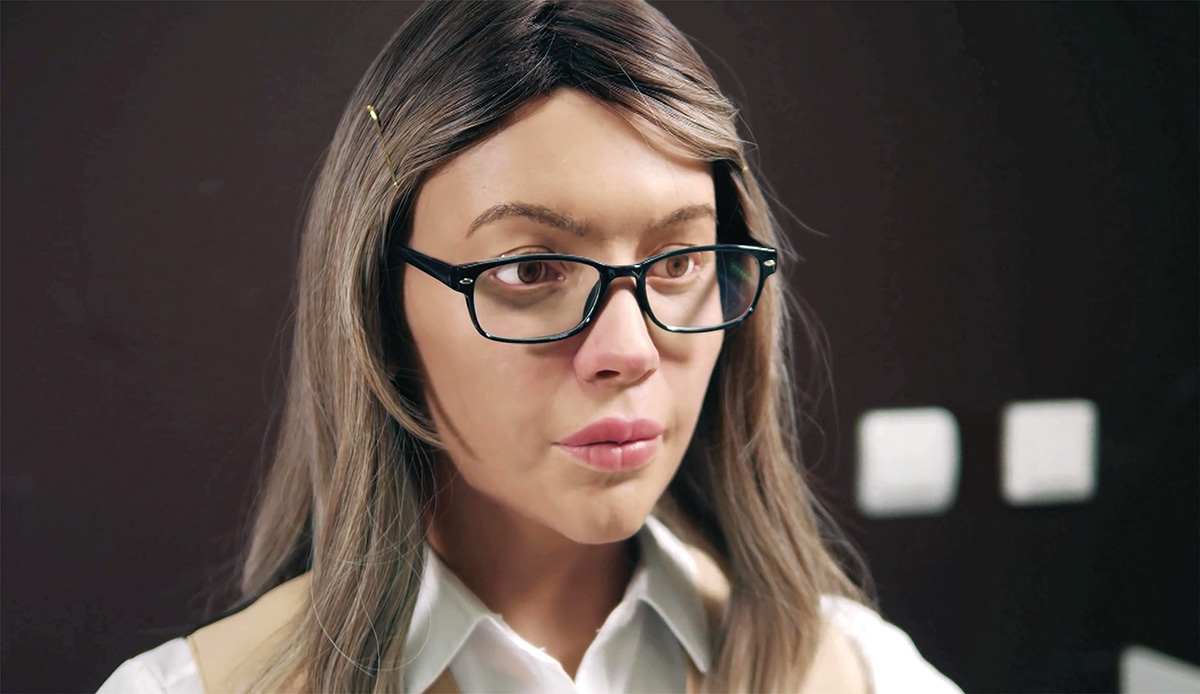
Eli CortiÑas
I‘ve Always Demanded More From The Sunset
Video | mov | color and b&w | 4:0 | Spain, Germany | 2022
In the three channel video installation 'I’ve Always Demanded More From The Sunset' a mysterious female artificial intelligence warns us about humans being naturally drawn to killing. While navigating different sequences of breathing exercises to overcome fear and what seems to be an array of non human entities in a state of uncanniness and disbelief, different associations and questions beginn to appear: What stories lie in the forest? What arises in the ruins of man made devastation? An orchestrated symphony of mushrooms emerges from the ground like a poetic anticipation of post-human life.
Eli Cortiñas is a video artist of Cuban descent, born in Las Palmas de Gran Canaria. She was a guest professor at the Art Academy Kassel and the Art Academy Mainz and shared a professorship for Spatial Concepts with Candice Breitz at the University of Art Braunschweig from 2019 till 2022 Cortiñas has recently been appointed professor for Media Art at the Academy of Fine Arts Leipzig. She has received numerous grants and residencies, including Fundación Botín, Kunstfonds, Villa Massimo, Berlin Senate, Villa Sträuli, Goethe Institute, Kölnischer Kunstverein, Rupert and Karl Schmidt Rottluff among others. Cortiñas’ work has been presented in solo and group exhibitions at institutions such as Museum Ludwig, Kunsthalle Budapest, CAC Vilnius, SCHIRN Kunsthalle, SAVVY Contemporary, Kunstverein Braunschweig, Museum Marta Herford, Kunstraum Innsbruck, Centro Atlántico de Arte Moderno, Centre Georges Pompidou, Museum of Modern Art Moscow, Kunstmuseum Bonn and MUSAC et al., as well as in international Biennials and festivals such as Ural Industrial Biennial, Riga Biennale, Moscow International Biennale for Young Art, Mardin Biennale, International Short Film Festival Oberhausen, International Curtas Vila Do Conde and Nashville Film Festival et al. She lives and works in Berlin.
Egle Budvytyte : Songs From The Compost - Experimental fiction | mov | color | 28:8 | Lithuania, Netherlands | 2022
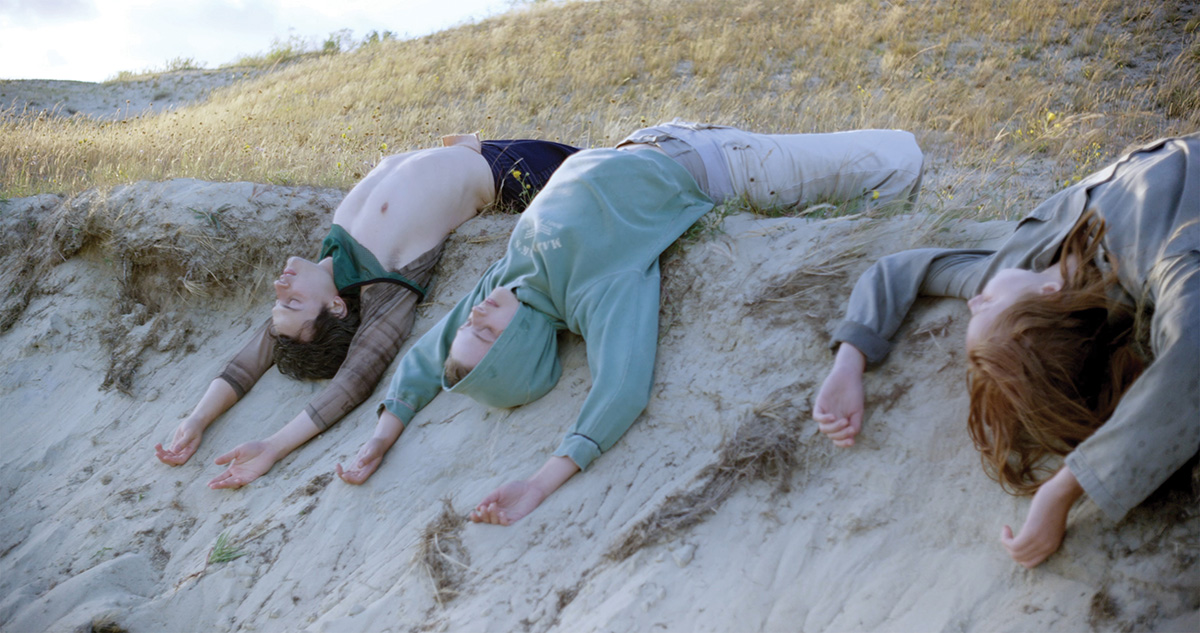
Egle Budvytyte
Songs from the Compost
Experimental fiction | mov | color | 28:8 | Lithuania, Netherlands | 2022
'Songs from the Compost: Mutating Bodies, Imploding Stars', shot in the pine forests and sand dunes of the Curonian Spit, is a hypnotic exploration of nonhuman forms of consciousness and different dimensions of symbiotic life: interdependence, surrender, death, and decay. The images gradually layer, alongside intimate lyrics of a song that channels the desires of an entity shapeshifting across different genders, voices, and beyond-human embodiments. Featuring a cast comprised of local youth, alongside performer and choreographer Mami Kang, the film unfolds through a specially conceived song, choreography and costumes. Horizontality in the choreography undoes the usual verticality of the human figure, unfurling her into the landscape.The performers’ bodies are sites of activity, though they’re often horizontal, pulled toward the earth and one another, moving through the forest, along the sand dunes and water. The song lyrics draw on the work and words of biologist Lynn Margulis, celebrating the role of bacteria in making life and the collaboration between the single-cell organisms possible, as well as concepts by the science-fiction author Octavia Butler, who employed tropes of symbiosis, mutation, and hybridity to challenge hierarchies and categorisation.
Egl? Budvytyt? (b. 1981, Lithuania) is an artist based in Amsterdam and Vilnius working at the intersection between visual and performing arts. She approaches movement and gesture as technologies for a possible subversion of normativity, gender and social roles and for dominant narratives governing public spaces. Her practice, spanning across songs, poetry, videos and performances, explores the persuasive power of collectivity, vulnerability and permeable relationships between bodies, audiences and the environment. Her work was shown amongst others at the 59th International Art Exhibition of La Biennale di Venezia, Vleeshal, Middelburg, NL, Riga International Biennial of Contemporary art (RIBOCA); Renaissance Society, Chicago, Lofoten International Art festival; Block Universe festival, London; Art Dubai commissions; Liste, Art Basel; 19th Biennale of Sydney; De Appel Arts Centre; CAC in Vilnius, and Stedeljik Museum in Amsterdam. Egle was resident at Le Pavillon, Palais de Tokyo (Paris, FR, 2012) and at Wiels, Contemporary art centre, (Brussels, BE, 2013).
Nelson Bourrec Carter : It's Coming From Inside The House - Experimental fiction | mp4 | color | 10:45 | France | 2022
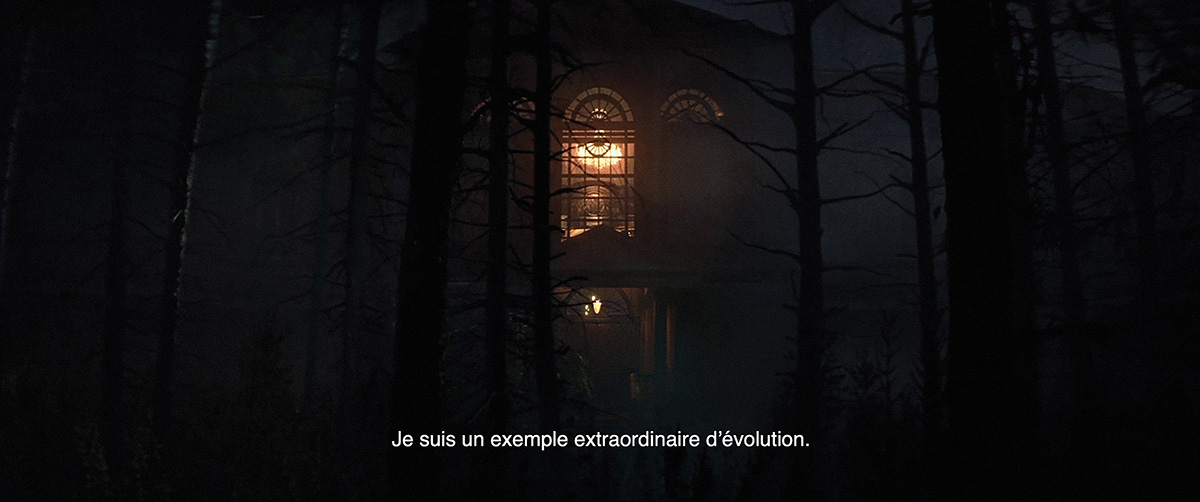
Nelson Bourrec Carter
It's Coming from Inside the House
Experimental fiction | mp4 | color | 10:45 | France | 2022
A seemingly disembodied voice reflects on what it takes to survive, in a world modeled after a perception of reality far from what the one it experiences on a daily basis.
Nelson Bourrec Carter is a French-American filmmaker and visual artist. His practice combines photography, film, installation and performance while his research revolve around the links woven between real territories and fantasized landscapes, whether they be urban, peri-urban, or rural, influenced by the weight of popular imagery. His work focuses mainly on the influence of American iconography on identity construction and racial awareness, and operates from places whose hybridity, history or architecture lend themselves to a new interpretation. He demonstrates that these visual tropes are more interconnected than they appear and that they articulate questions of gender, race, and class, while raising the issue of which bodies - whether they are embodied or inscribed in a ghostlike manner within the architecture - occupy the spaces of representation in the American cultural economy. Nelson’s films have been shown in festivals such as New Directors/New Films, Entrevues Belfort, Vila do Conde or within institutions like the Cinémathèque Française or the Jeu de Paume.

Mauridi Primo uses an ancient waking ritual linked to the Nyiragongo volcano and the goddess of abundance to explore new forms of intergenerational memory and mythology in an urban context. Based on research into new strains of coronavirus in sacred caves in Myanmar - at once high-risk and spiritual sites where humans and animals, science and religion, nature and politics intersect - Clara Jo presents a dreamlike narrative examining the way in which various systems (gendered, racial, economic and metabolic), integrated into the global health system, feed the fear of contamination by the non-human. Eli Cortiñas uses a mysterious female artificial intelligence to warn us about the natural human attraction to murder. Mushrooms emerge from the ground, like a poetic anticipation of post-human life. In a horizontal choreography, set in a landscape of forest and dunes, Egle Budvytyte explores non-human forms of consciousness, as well as different dimensions of symbiotic life: interdependence, abandonment, death and decomposition. A song expresses the desires of an entity changing sex, voice and incarnation beyond the human. Using a montage of film extracts, Nelson Bourrec Carter creates a disembodied voice that reflects on human finitude and the possibility of survival in a world modelled on a reality that is far removed from everyday experience.
Screening
Haus der Kulturen der Welt | Safi Faye Hall
John-Foster-Dulles Allee 10, 10557 Berlin / Subway: lines S5, S7, S9, S75, station: Hauptbahnhof
Free admission
"The Cold War Did Indeed Happen"
Veronika Eberhart : Garten Sprengen - Experimental doc. | 16mm | color | 12:0 | Austria | 2022
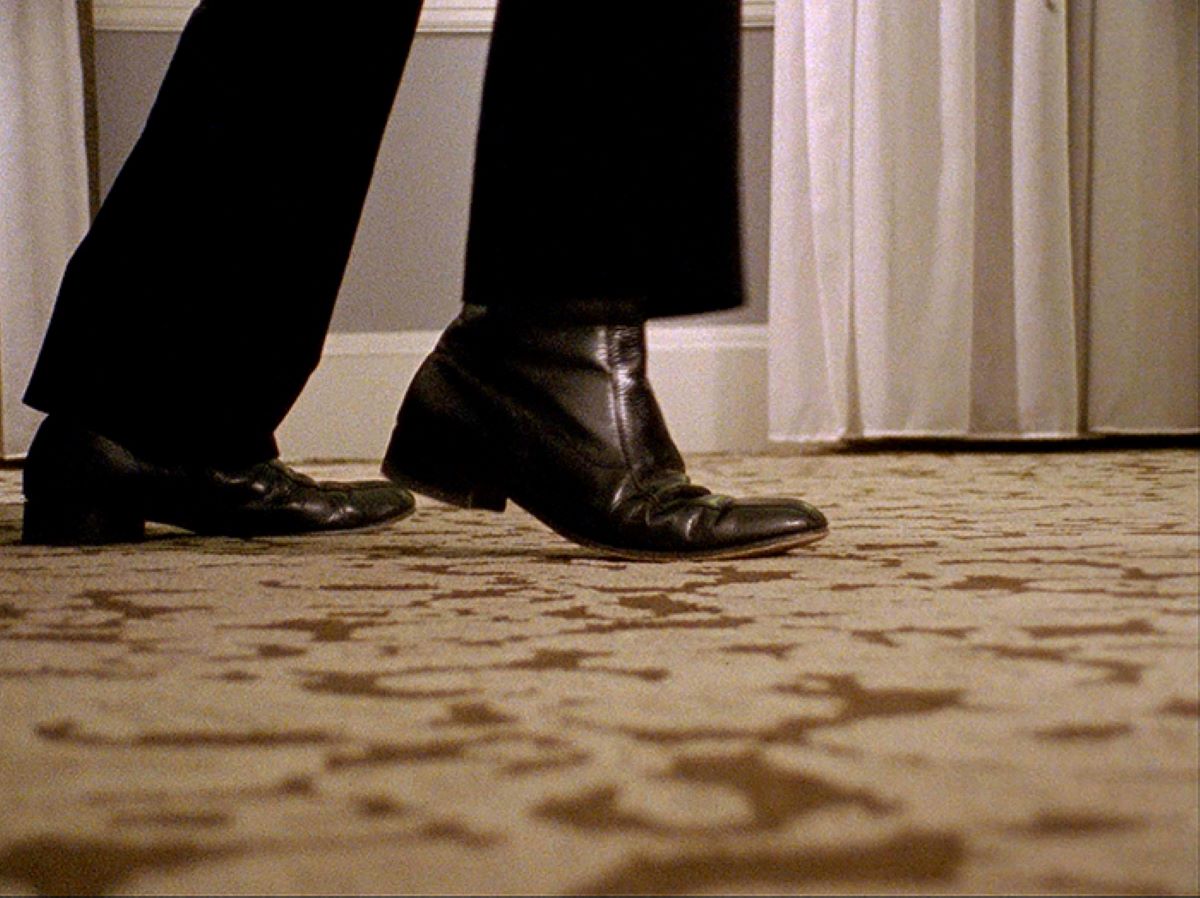
Veronika Eberhart
Garten sprengen
Experimental doc. | 16mm | color | 12:0 | Austria | 2022
“Are you familiar with American poetry?” The question sounds like an accusation as posed by Hanns Eisler in a heavy German accent during his interrogation in 1947 by the House Committee on Un-American Activities. Simultaneously Veronika Eberhart's GARTEN SPRENGEN shows a man (performer: Ian F Svenonius) wandering down a virtually endless hotel corridor. Yet it is the elaborate blue, yellow and cream colored pattern of the hotel's carpet floor that sticks out. Its haptic quality becomes directly translated into imagery during a different montage sequence: a hand sensitively glides along a window ledge, another likewise touches the neck of a guitar, and a third caresses the armrest of a sofa. These images attempt to grasp the ghosts of an historical place, specifically the Biltmore Hotel in downtown Los Angeles. This previous site of the Academy Awards was also where Eisler's hearing at the beginning of the McCarthy era took place... more info: https://www.sixpackfilm.com/en/catalogue/2787/
Visual artist, filmmaker and musician, born 1982 in Bad Radkersburg. Studied sociology in Vienna and Copenhagen, visual arts at the Academy of Fine Arts Vienna and at the Friedl Kubelka School for independent film, Vienna. Various exhibitions and film festivals, most recently at Mackey Garage Top, MAK Center, Los Angeles (2020), Kunsthalle Vienna (2019), Kharkiv Municipal Gallery (2019), New Jörg, Vienna (2019), Kunsthalle Exnergasse, Vienna (2018), rotor Graz (2018), Bazament Art Space, Tirana (2018), A-GALLERY, Tokyo (2017)
Katja Pratschke, Gusztáv Hámos : In Limbo - Experimental doc. | 4k | color and b&w | 31:42 | Germany | 2022
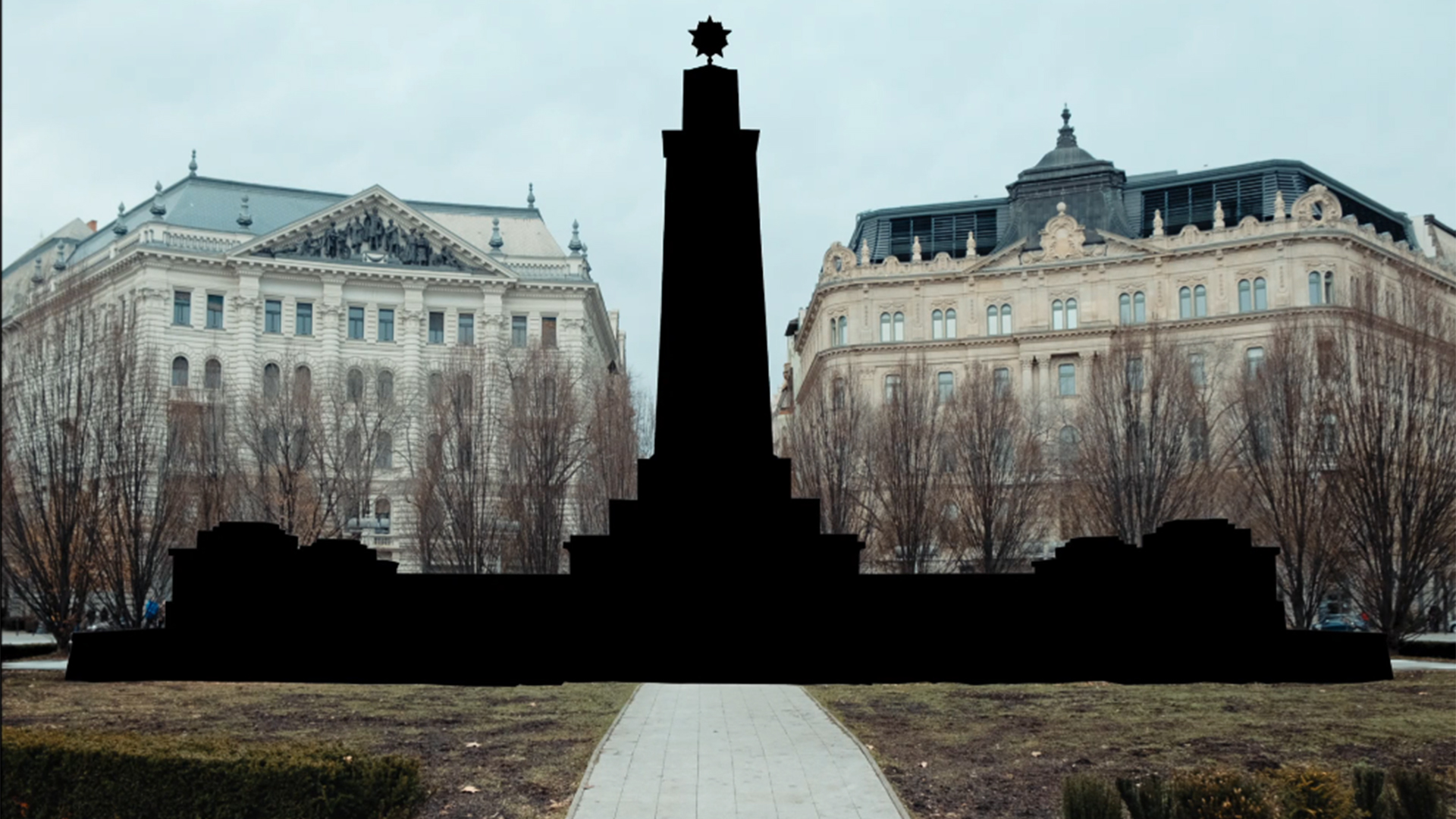
Katja Pratschke, Gusztáv Hámos
In Limbo
Experimental doc. | 4k | color and b&w | 31:42 | Germany | 2022
IN LIMBO is about a young man who flees from Hungary to West Berlin during the Cold War. Kiesling's story begins with his conscription into the people's army for military service. Ever since he realised that the state – in which he lives – claims ownership of him, his relationship with reality, with real freedom, has changed dramatically. He decides to reset his identity.
As media artists and artistic researchers, Gusztáv Hámos and Katja Pratschke have been working together on the theory and practice of intermedial arts for 20 years. Thus, their artistic practice includes video, film, photography, interactive and site-specific installations, VR work, as well as the curation of exhibitions, symposia, film series, workshops, and publications. They are founding members of the Concrete Narrative Society e.V. and members of the top_OS collective.
Charlotte Eifler, Clarissa Thieme : Archival Grid 1 - Experimental doc. | 0 | color | 13:0 | Germany, Bosnia & Herzegovina | 2022
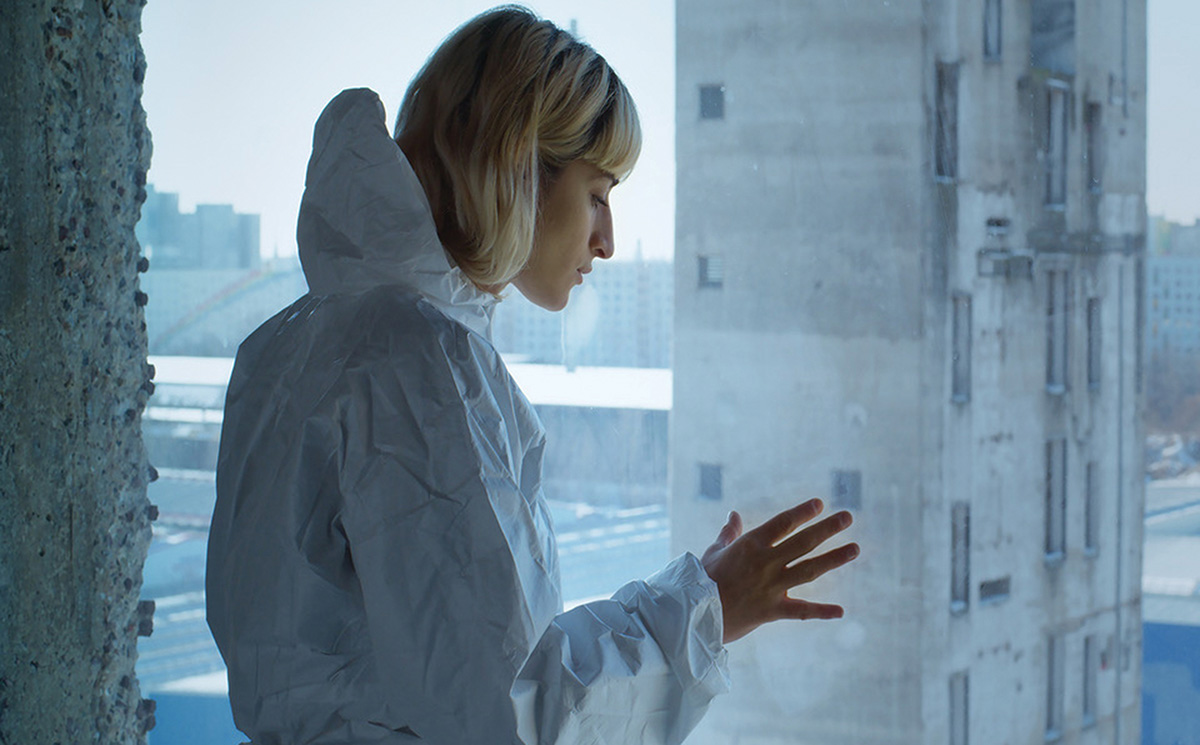
Charlotte Eifler, Clarissa Thieme
Archival Grid 1
Experimental doc. | 0 | color | 13:0 | Germany, Bosnia & Herzegovina | 2022
With the installation ARCHIVAL GRID, Charlotte Eifler and Clarissa Thieme present a filmic analysis in three parts. The work explores the tools of evidence production, the legal impact of cartographic surveys and the social processing of collective traumata and war crimes, as well as the criticism of it by those affected. The source materials are videos from one of the most extensive publicly accessible archives on war crimes: the archive of the International Criminal Tribunal for the former Yugoslavia (ICTY). In 2001, the ICTY conducted site visits with witnesses in Sarajevo to prepare indictments related to the 1992–1996 siege of the city. The purpose of these site visits was the detailed reconstruction of war crimes, particularly the targeted shelling of civilians. Interviews with the local witnesses at the original sites were documented on video, combined with 360-degree photographs and geographical surveys. The first part of ARCHIVAL GRID combines the forensic materials gene- rated from the ICTY evidence documents with transcripts from the court proceedings and interviews conducted today with witnesses and former employees of the ICTY. These recordings of different surveying practices in the fictitious setting of a future archive architecture shape the cinematic discursive framework. This reflects close parallels of perspectives in the technologies of witnessing, evidence and testimony and juxtaposes them with the demands of the affected people for recognition of their suffering. In a second part, ARCHIVAL GRID analyses the historical backdrop of tools of inquiry and their database logic as well as their entanglements with governmentality and coloniality. Algorithms collect data from digital archives and constantly create, combine and re-organize existing and emerg- ing databases. Through historical surveying instruments, maps and globes from the Mathematisch-Physikalischer Salon in Dresden collected und used by the Electors of Saxony, Augustus (1526– 1586) and Augustus II the Strong (1670–1733), Eifler and Thieme reflect on the historic interplay between survey and data collection, its visual representations and absolutistic claims to power. A third part turns once again to the archival ICTY videos to reflect on the specific forms of image production. Juxtaposing the processes and practices of the ICTY film team and the artistic methods that were used in the production of ARCHIVAL GRID, Eifler und Thieme engage with their own positions as filming artists and their role in the interrelation with witnesses of the war.
Charlotte Eifler is an artist and filmmaker spanning performance, video, installation, XR, and sound. Her works address the politics of representation, abstraction, and computation, and are characterized by interdisciplinary forms of collaboration. Focusing on feminist approaches and elements of science fiction, she explores processes of image & history production and imaginations of alternative futures. Charlotte is co-founder and/or member of the networks Digital Critique Leipzig, G-Edit, cobratheater.cobra, FACES – gender,art,technology und feat.Fem. Since Nov 2020, she’s teaching in the department of Media Art/ Film at the Karlsruhe University of Arts and Design (HfG). Eifler’s works have been presented at ACM Siggraph Art, Los Angeles (US); Staatliche Kunsthalle Baden Baden (DE), Le printemps de Septembre, Toulouse (FR); Sapporo International Art Japan (JN); Haus der Kulturen der Welt, Berlin (DE); IMPAKT Utrecht (NL); Kurzfilmtage Oberhausen and RENCONTRES INTERNATIONAL Paris among others. Residencies and scholarships facilitated her research in Moskau (Rosa Luxemburg Foundation), New York (KdFs Foundation) and Mexico City (Institutio Nacional de Bellas Artes y Literatura). /// Clarissa Thieme works with film, performance, text, and installation, combining documentary and fictional methods to explore processes of memory and historical translation as well as their identity implications. For this purpose, Thieme often deals with subjective testimonies in the context of collective traumas and their reconstruction with technical and legal means to trace the fissures that open up between the languages of individual memory and their translation into processes of historical objectification. Her practice is research-oriented and takes a collaborative approach. In series, many of her works link together to form long-term studies that span several years. Since the early 2000s, various artistic projects have taken her to the post-Yugoslav space, where she has collaborated with various archival collections and initiatives.
Juliane Jaschnow : Rekapitulieren - Experimental doc. | mp4 | color and b&w | 14:52 | Germany, Russia | 2020
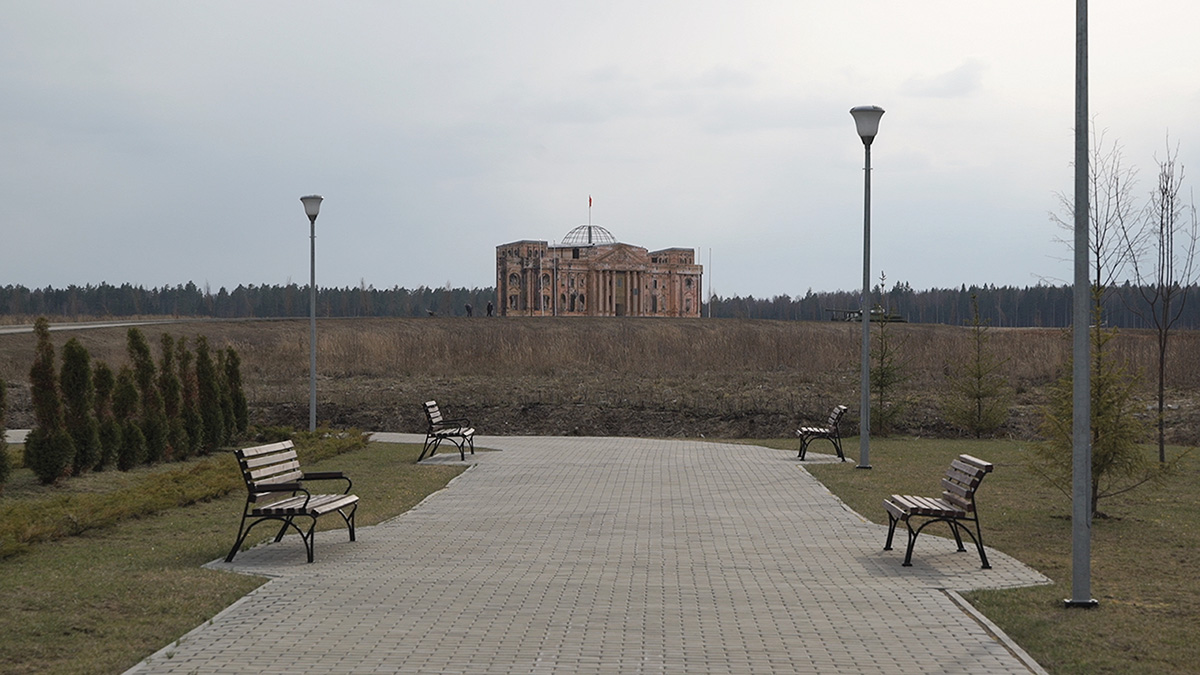
Juliane Jaschnow
Rekapitulieren
Experimental doc. | mp4 | color and b&w | 14:52 | Germany, Russia | 2020
In April 2017, hundreds of extras on a field near Moscow reconstruct the iconic key scene of Russian war commemoration - the storming of the German Reichstag and the raising of the Soviet flag atop the building. A copy of the Reichstag building erected for this purpose as part of a Russian military recreational park near Moscow is the starting point for “Rekapitulieren” (“Recapitulate”). The work investigates the modelling of collective monuments of memory, the role of image political practices and processes of staging and (re)constructing history. It asks about the ghostly switching points of the past and the ‘identitarian’ intentions with which historical images can be reanimated and used in the present.
Juliane Jaschnow is a filmmaker and artist. Working with film, video, installation, object and print she discusses contemporary and historical image politics as well as collective narratives, memory processes, and their identity-creating dimension. She studied visual arts specializing in expanded cinema and photography at the Leipzig Academy of Visual Arts. Juliane Jaschnow is a graduate of the Professional Media Master Class PMMC for artistic documentary film and the PMMC Lab at the werkleitz Center for Media Arts. Her work has been shown in international festivals and exhibitions such as transmediale Berlin, Deichtorhallen Hamburg, National Gallery Prague, DOK Leipzig, Ars Electronica Linz. She is a member of the Filmic Initiative Leipzig FILZ. www.julianejaschnow.de
Liina Siib : August Procession - Experimental doc. | 4k | color | 11:0 | Estonia | 2022
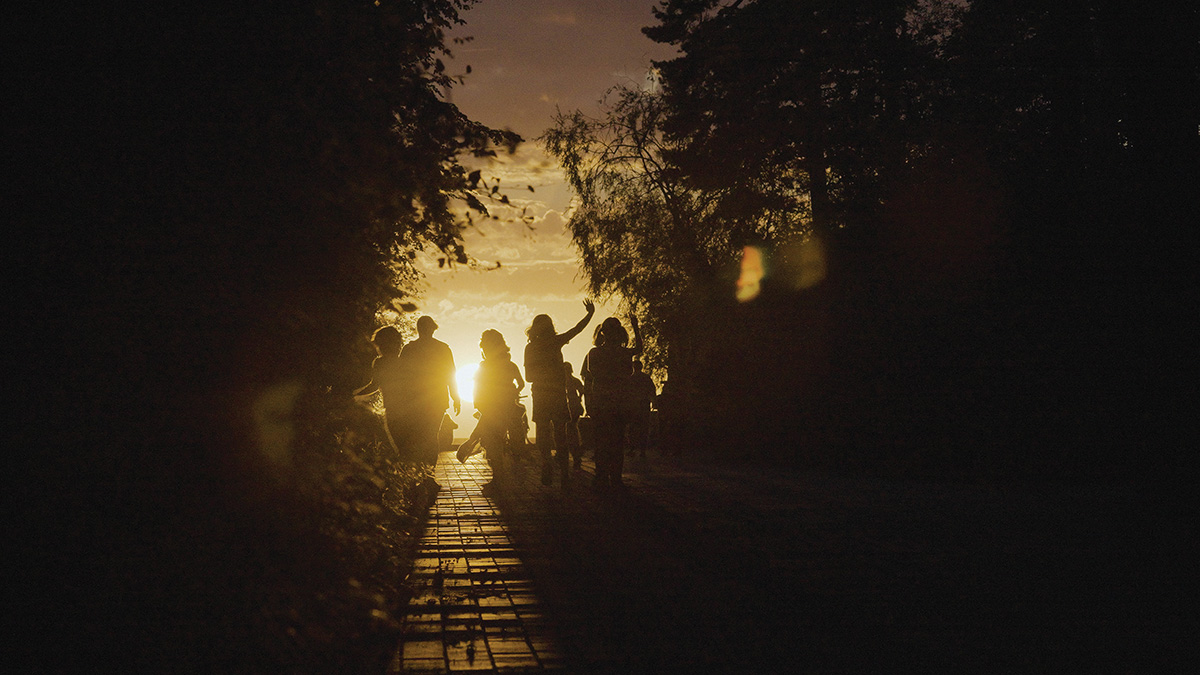
Liina Siib
August Procession
Experimental doc. | 4k | color | 11:0 | Estonia | 2022
“August Procession” is about different tempos co-existing at the same time. The light from windows registers the passing of time in the abandoned factory building, the speed of the bus determines the length of the passengers’ conversation. The minutes have been counted until sunset. And then there’s memory time. Time to recall. Perhaps to celebrate together and feel a sense of belonging. “August Procession”, filmed in Narva area, enters into a mental dialogue with events that occurred at the eastern border of Estonia and the European Union in August 2022. The central theme in local news was the plan of the removal of the tank monument to the Soviet ‘liberators’, erected 52 years ago. Local habitants were used to see the tank on the plinth nearby the road while driving to the beach. The tank was removed on 16 August by the Estonian government, due to various tensions, caused by the Russian war in Ukraine and dramatically changed geopolitical situation. Several Russian speaking people in Narva fell into mourning because the tank was an important souvenir for them. The religious procession took place a week later, from a retreat to a famous orthodox monastery in the area.
Liina Siib is a visual artist, filmmaker, educator and curator from Tallinn, Estonia. She has studied printmaking and photography at the Estonian Academy of Arts, photography and video in exchange at the University of Westminster in London. Currently she works as the Professor of Graphic Art at the Estonian Academy of Arts. Film, photography and installation as her main interests, she explores various manifestations of people’s everyday practices and social space. Her works deal with characters, spaces and situations that tend to go unnoticed due to their ordinariness or are silenced or ignored. She has made experimental documentary videos and staged short films that have been shown mostly in the gallery and exhibition context, sometimes using the format of expanded cinema. In 2011, her project “A Woman Takes Little Space” represented Estonia at the 54th Venice Art Biennale. Besides that her works have been shown at the international art biennales in Riga, Tallinn, Moscow, Rauma, Cerveira, Ljubljana and Rijeka. Recently, she has been artist at residence at the NART Narva Art Residency. Her work has been included in several public and private collections. In 2006 she received the Annual award of the Estonian Cultural Endowment. Full CV at: liinasiib.com/biography/
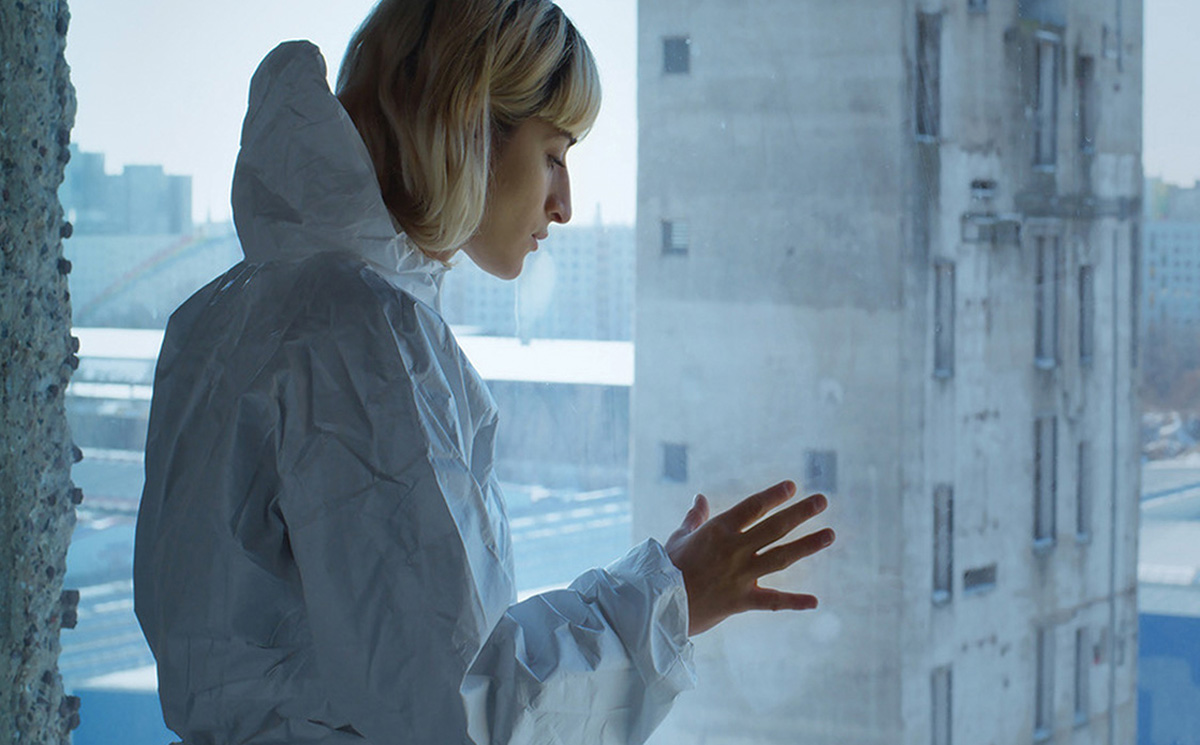
Veronika Eberhart films the Biltmore Hotel in Los Angeles and its seemingly endless corridors. A former venue for the Oscars, it was also the site of interrogations by the House Committee on Un-American Activities at the beginning of the McCarthy era. Katja Pratschke and Gusztáv Hámos tell the story of Budapest's Freedom Square in parallel with that of Kiesling, a young man newly conscripted into military service who, in an attempt to emancipate himself, flees Hungary for West Berlin during the Cold War. Drawing on the archives of the International Criminal Tribunal for the former Yugoslavia (ICTY), one of the largest publicly accessible archives on war crimes, Charlotte Eifler and Clarissa Thieme present an analysis of the tools used to produce evidence and the social treatment of collective trauma and war crimes. Using archive material, Juliane Jaschnow follows the reconstruction, near Moscow in 2017, of the emblematic storming of the Reichstag in Berlin at the end of the Second World War. In doing so, it examines the role of commemorative monuments. In Estonia, in the Narva region, where the monument to the Soviet 'liberators' has been removed, Liina Siib observes the different rhythms and temporalities that coexist in the same place.